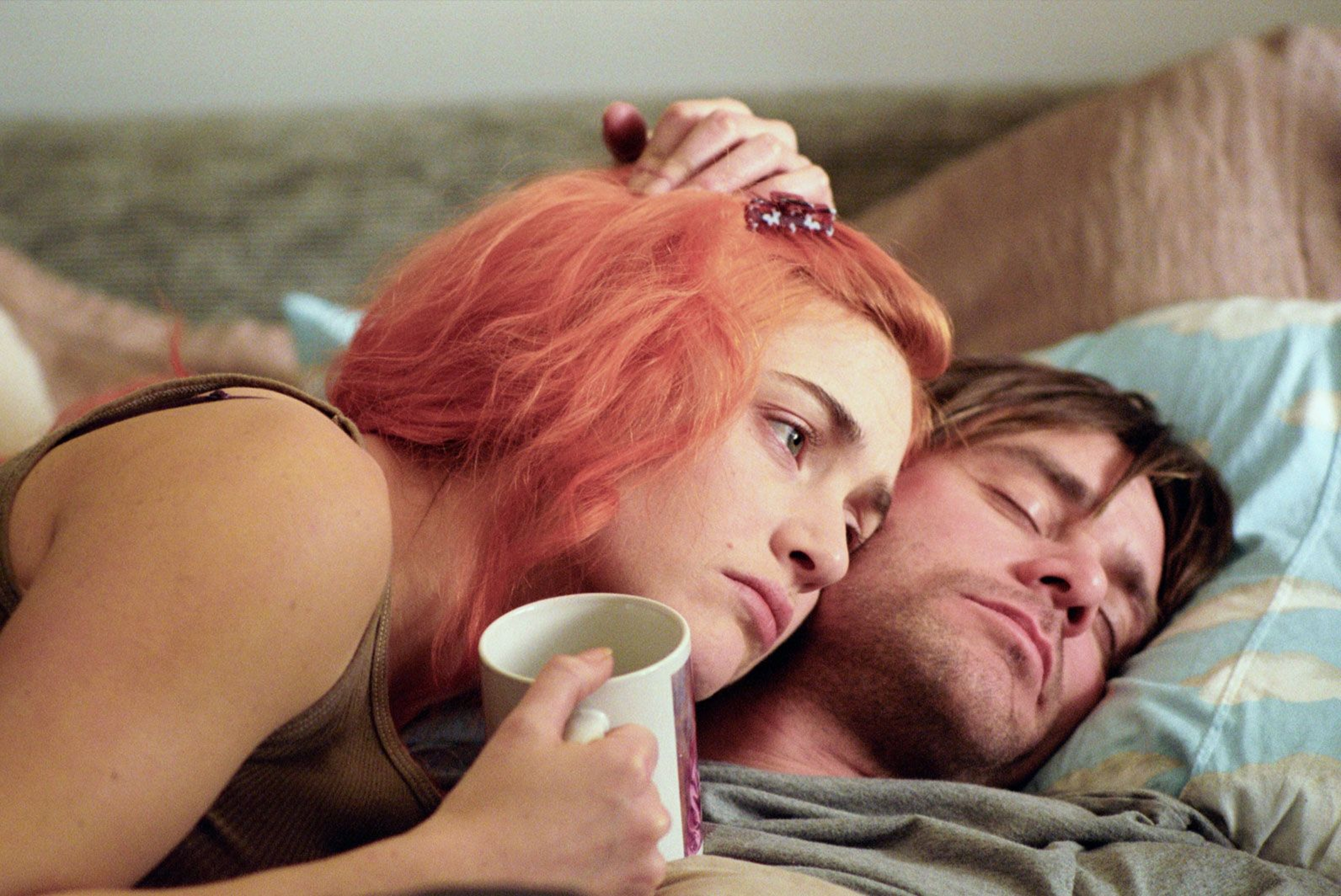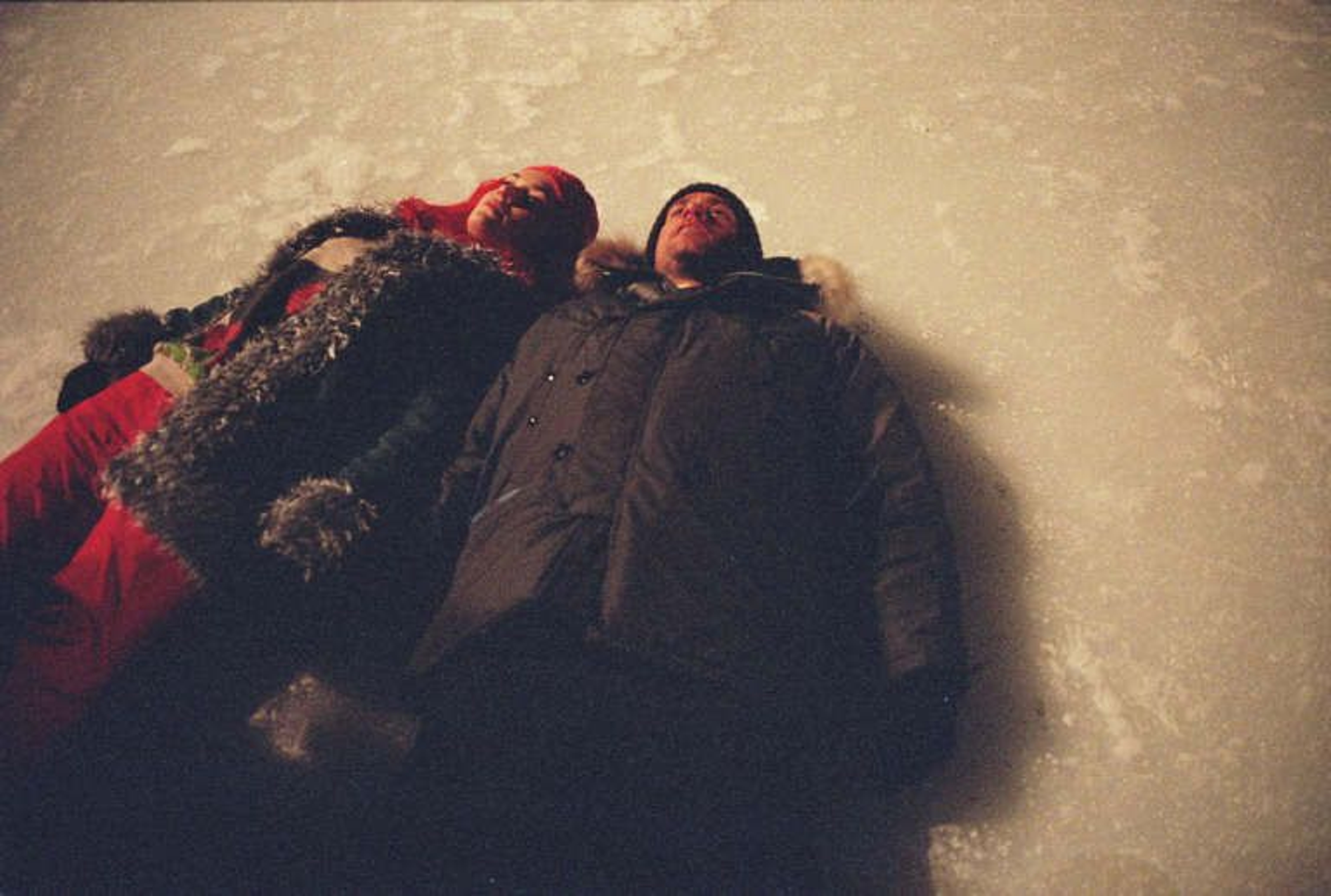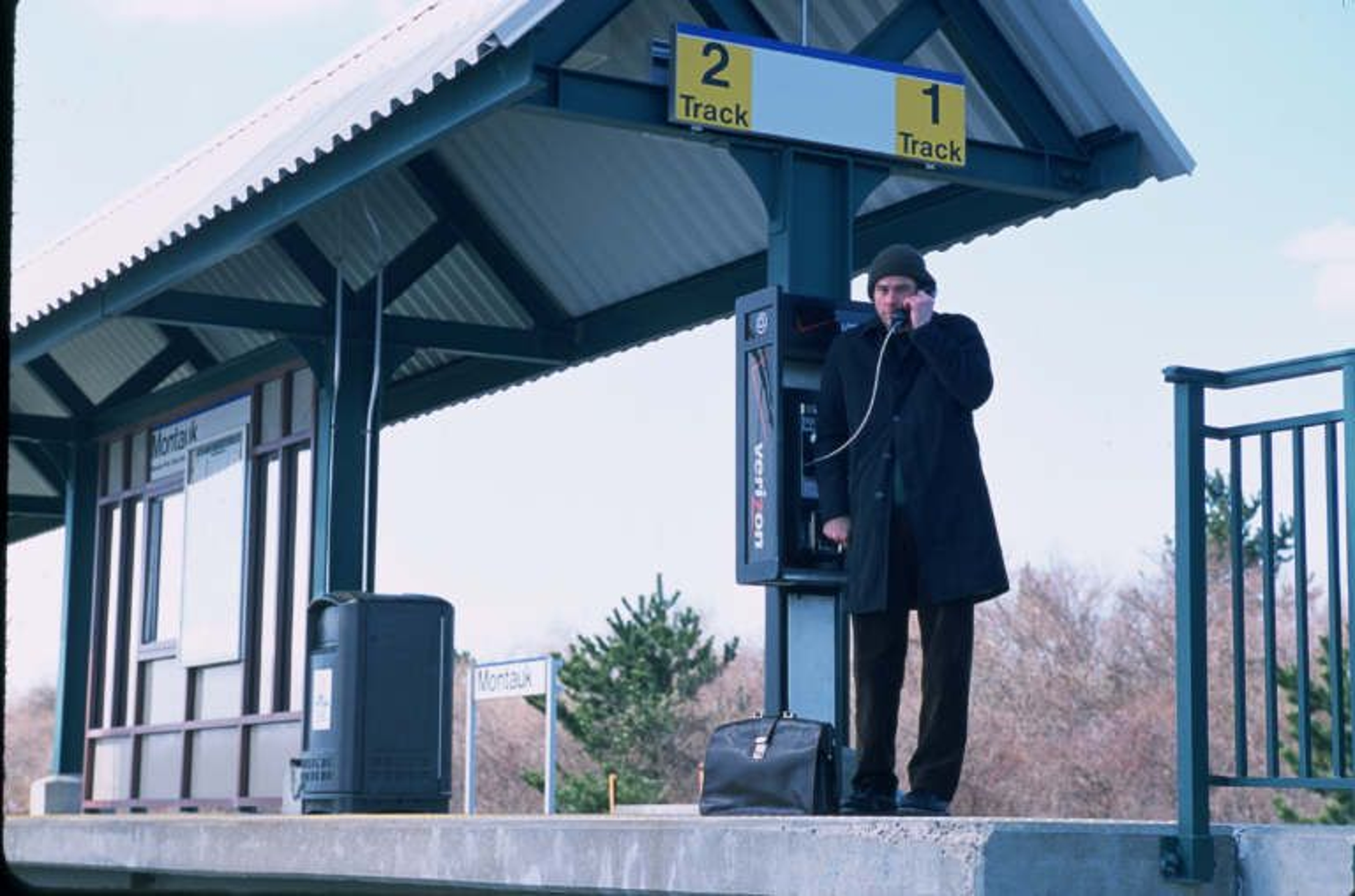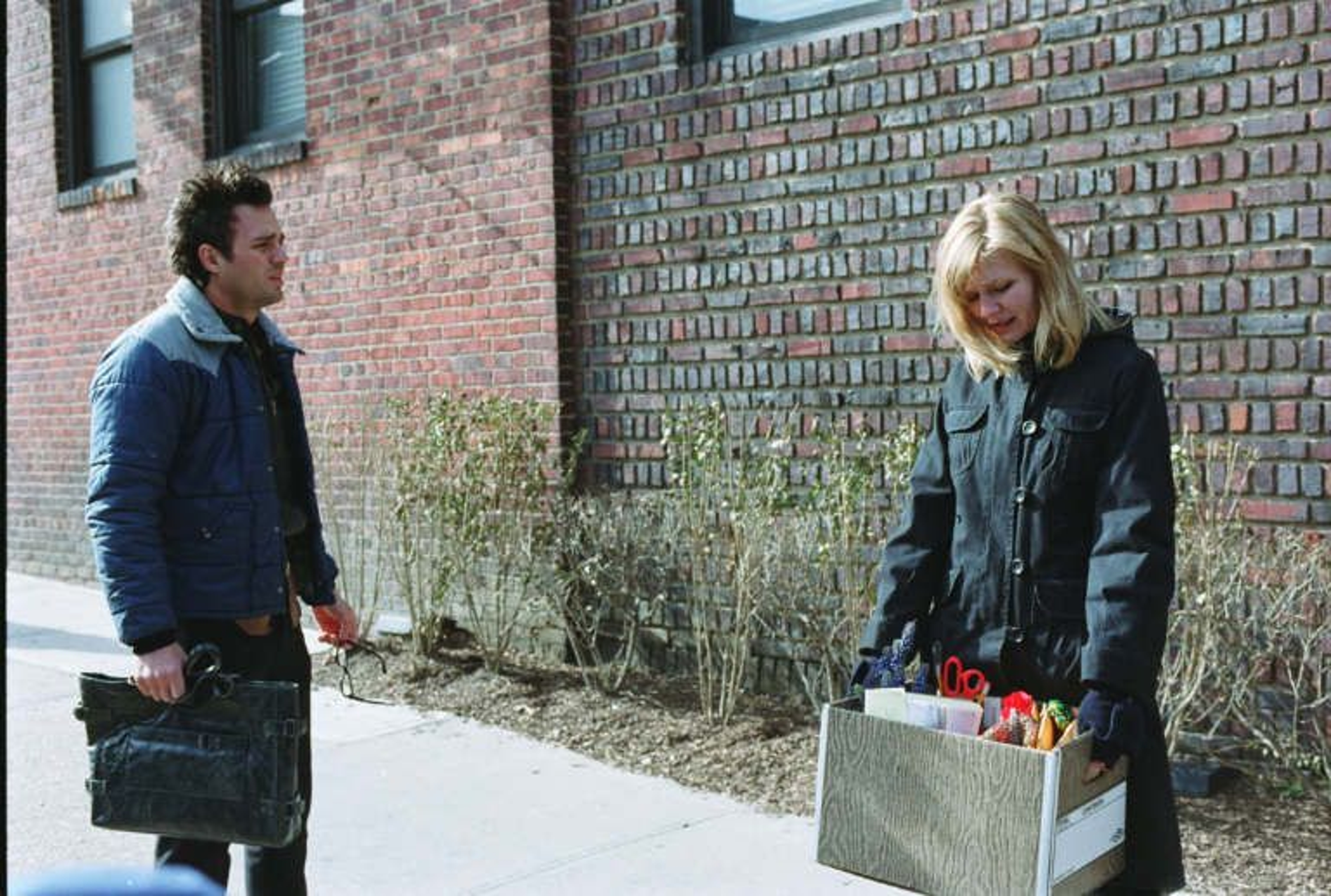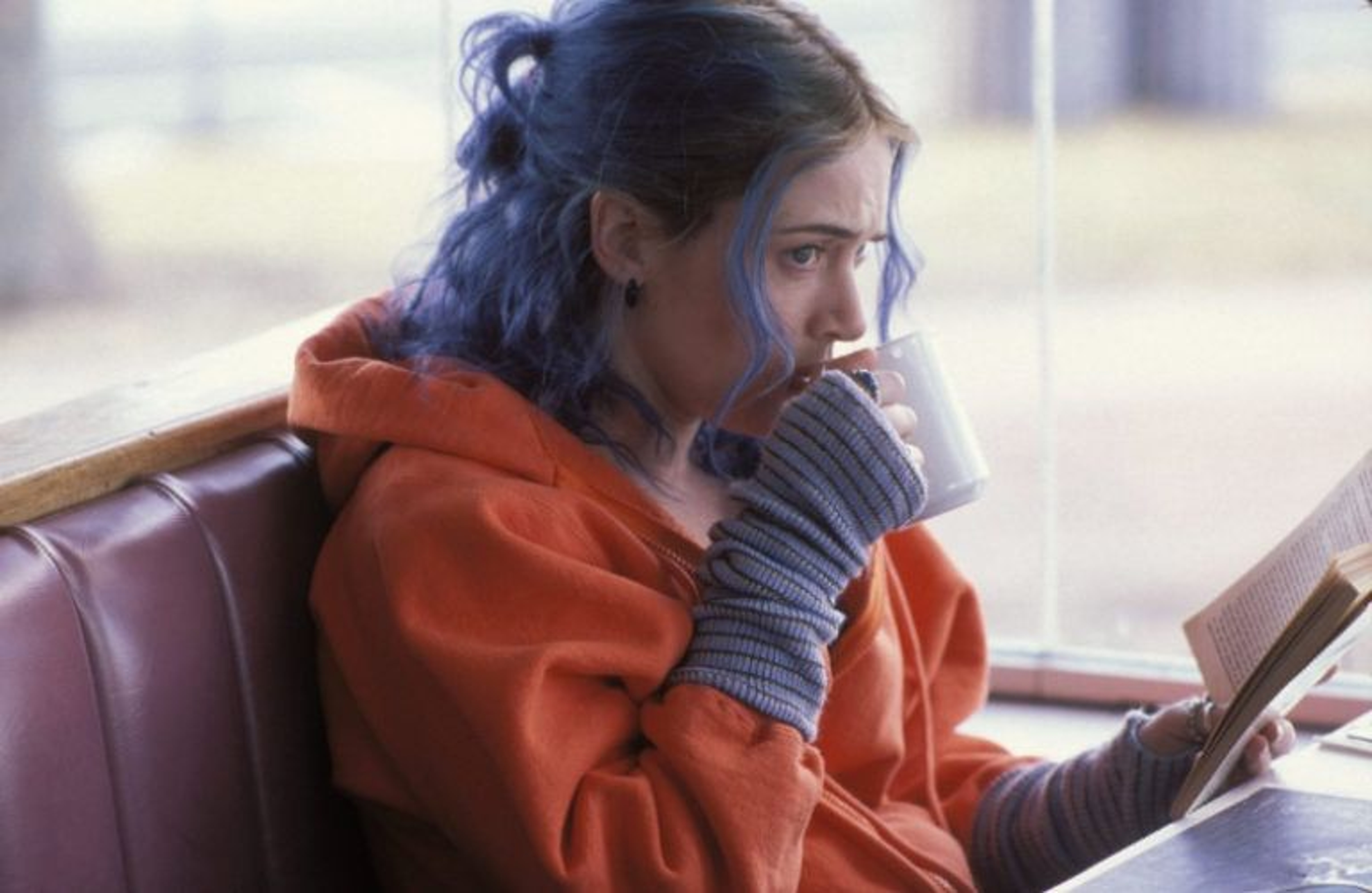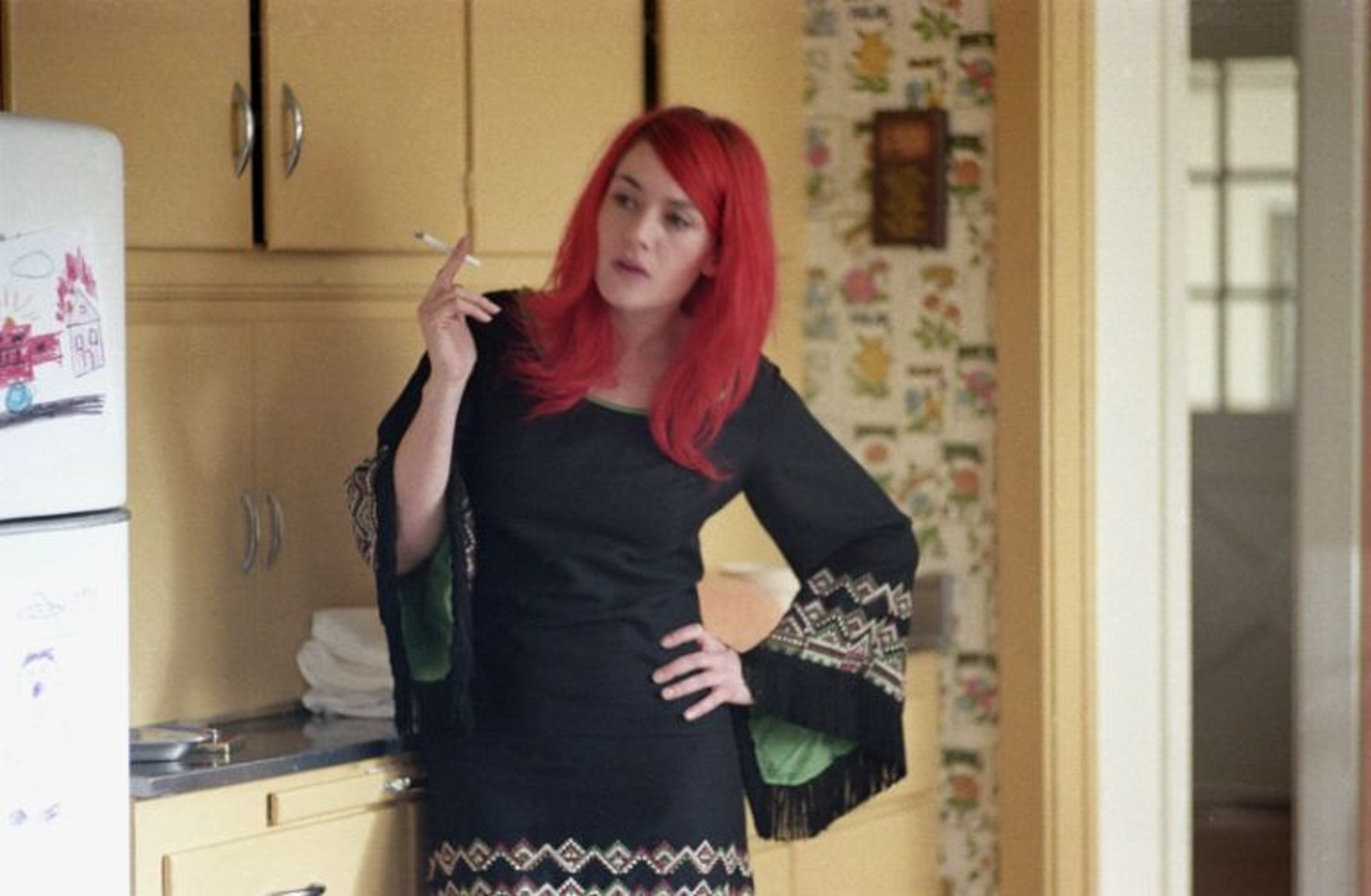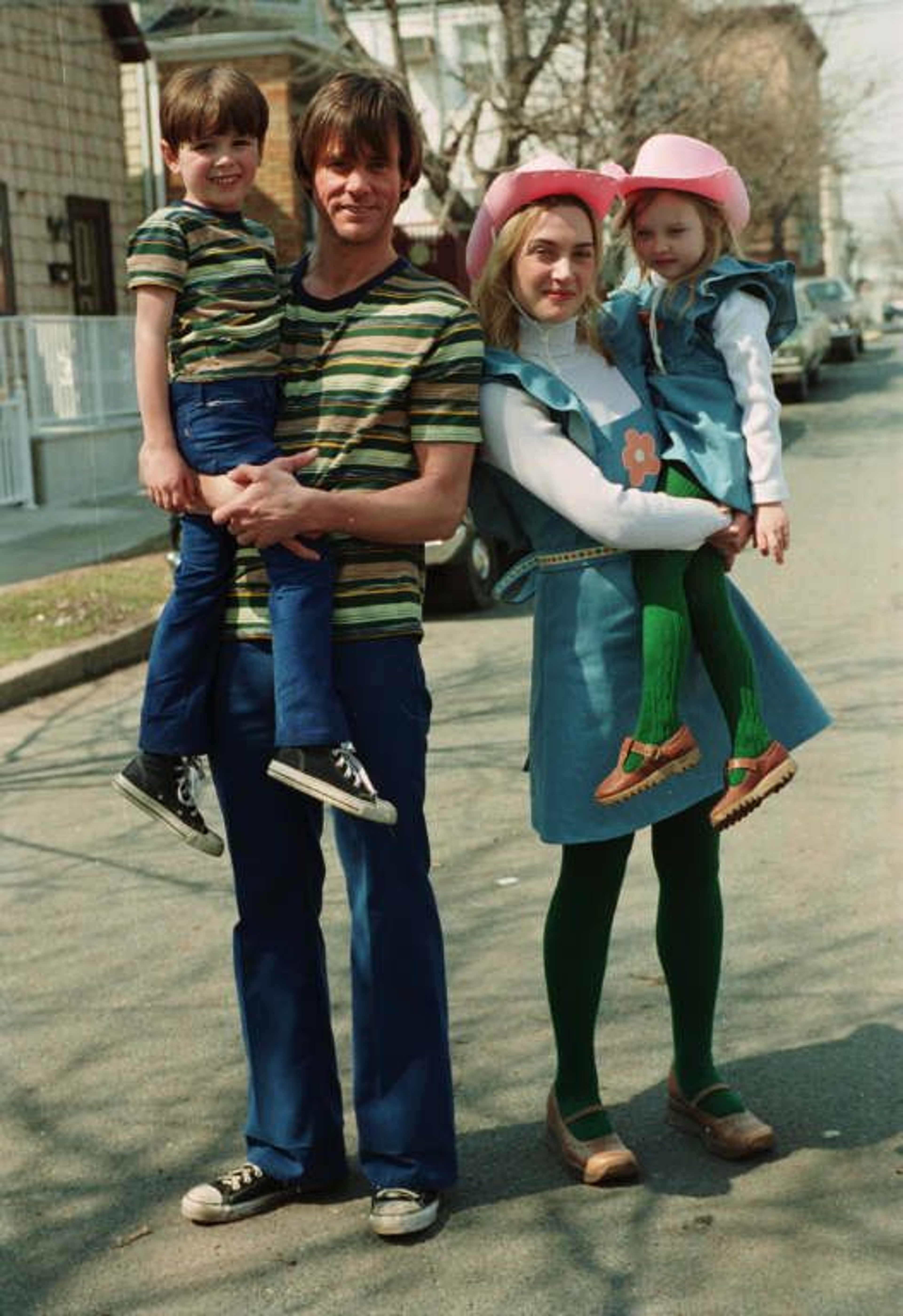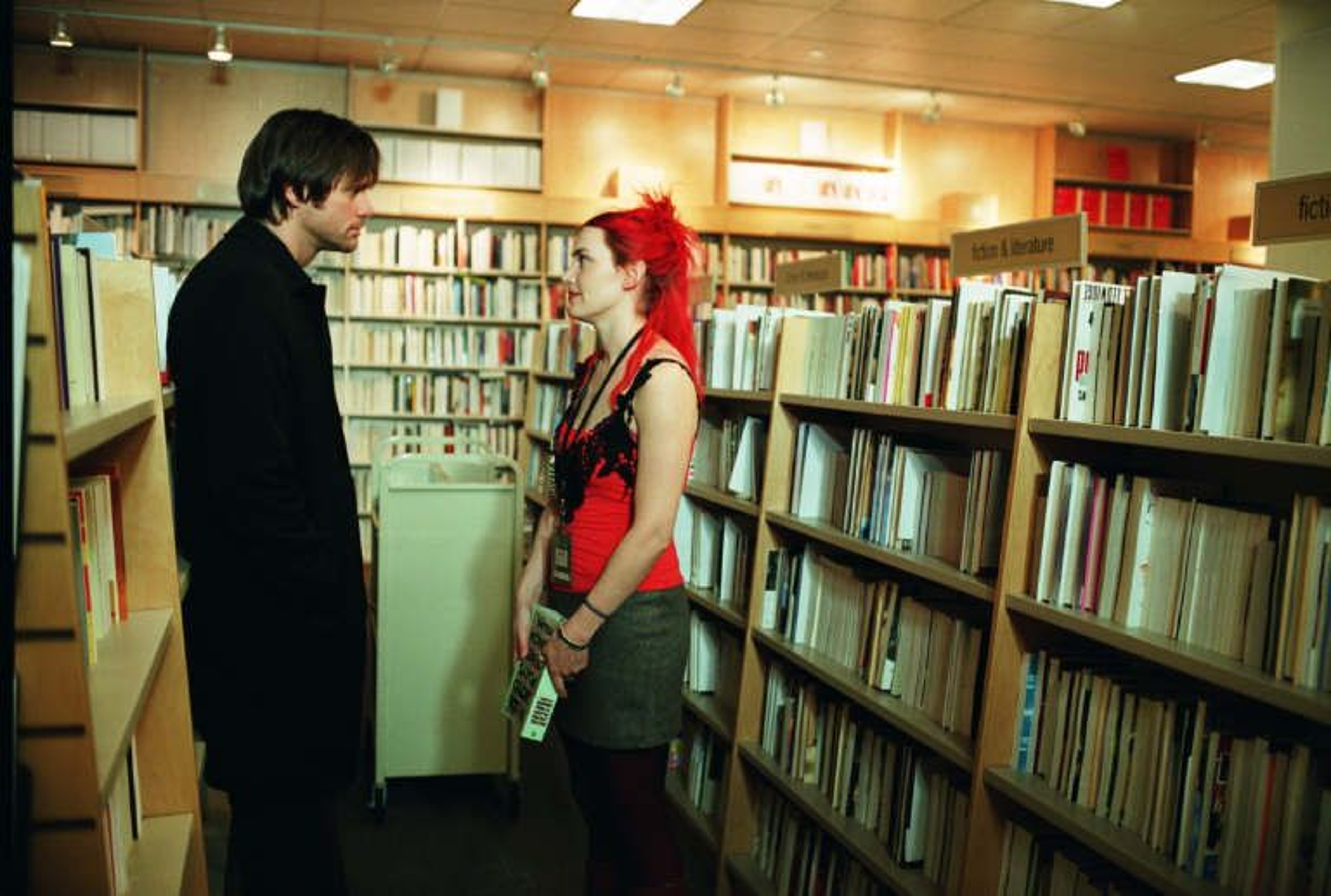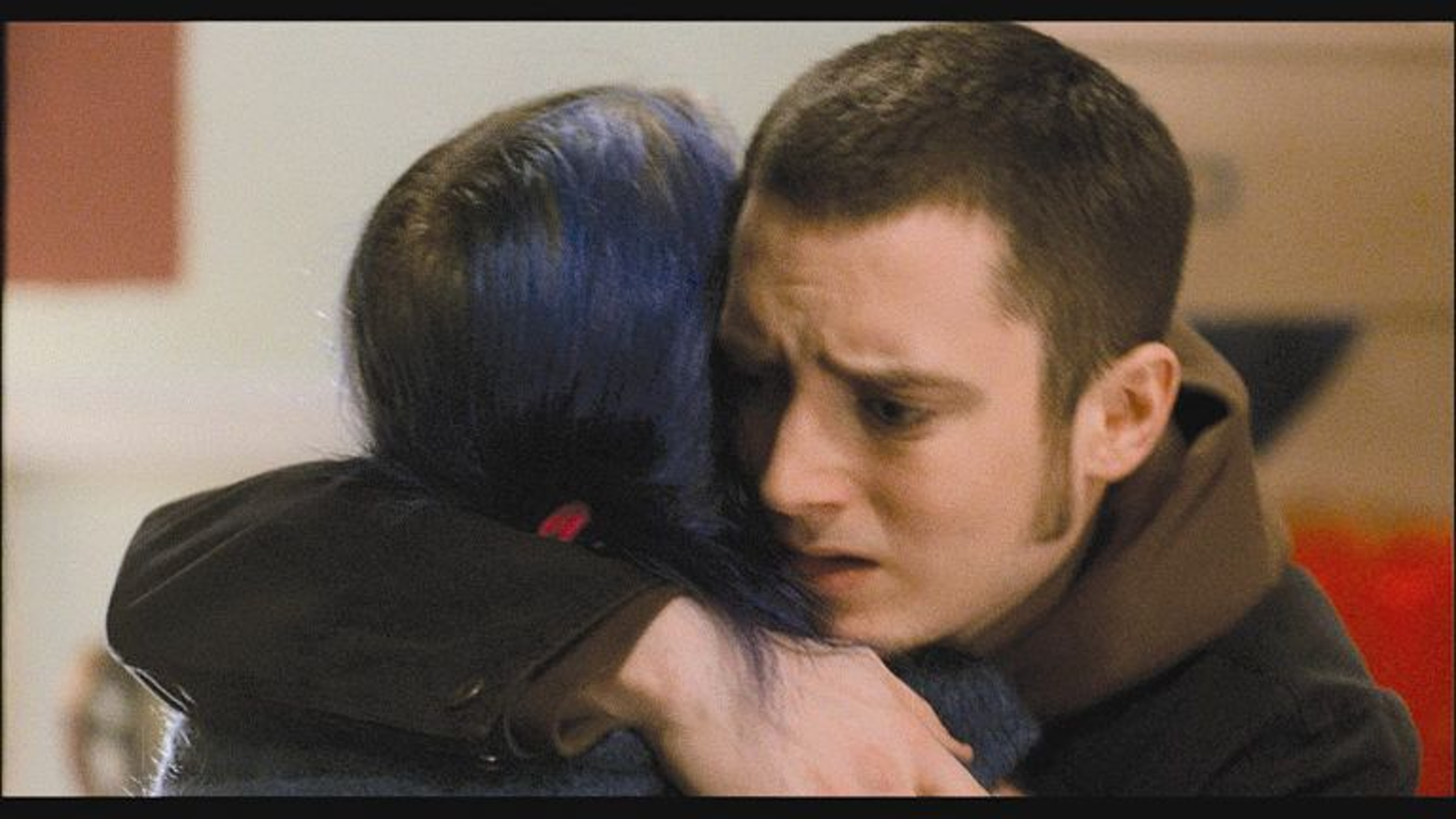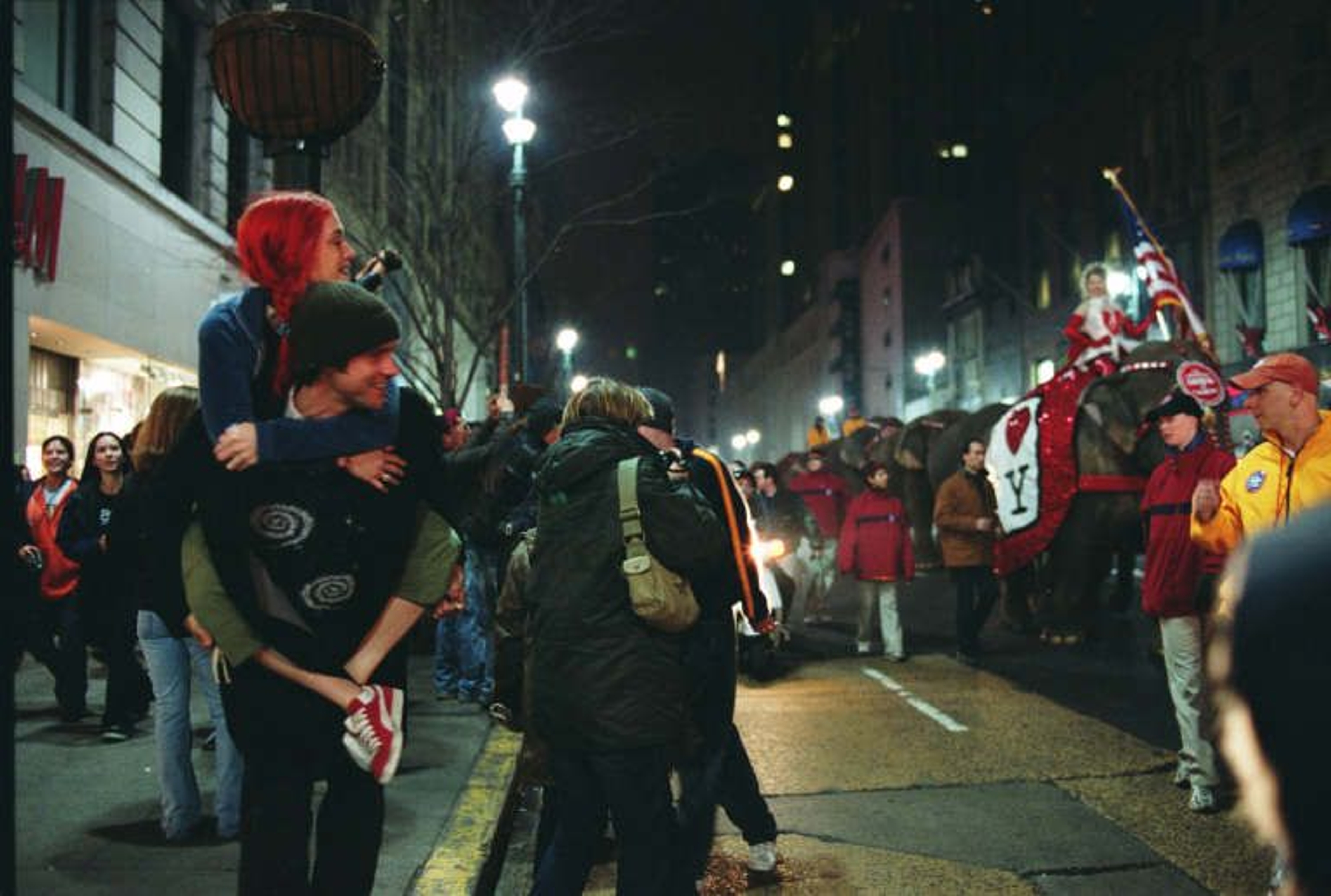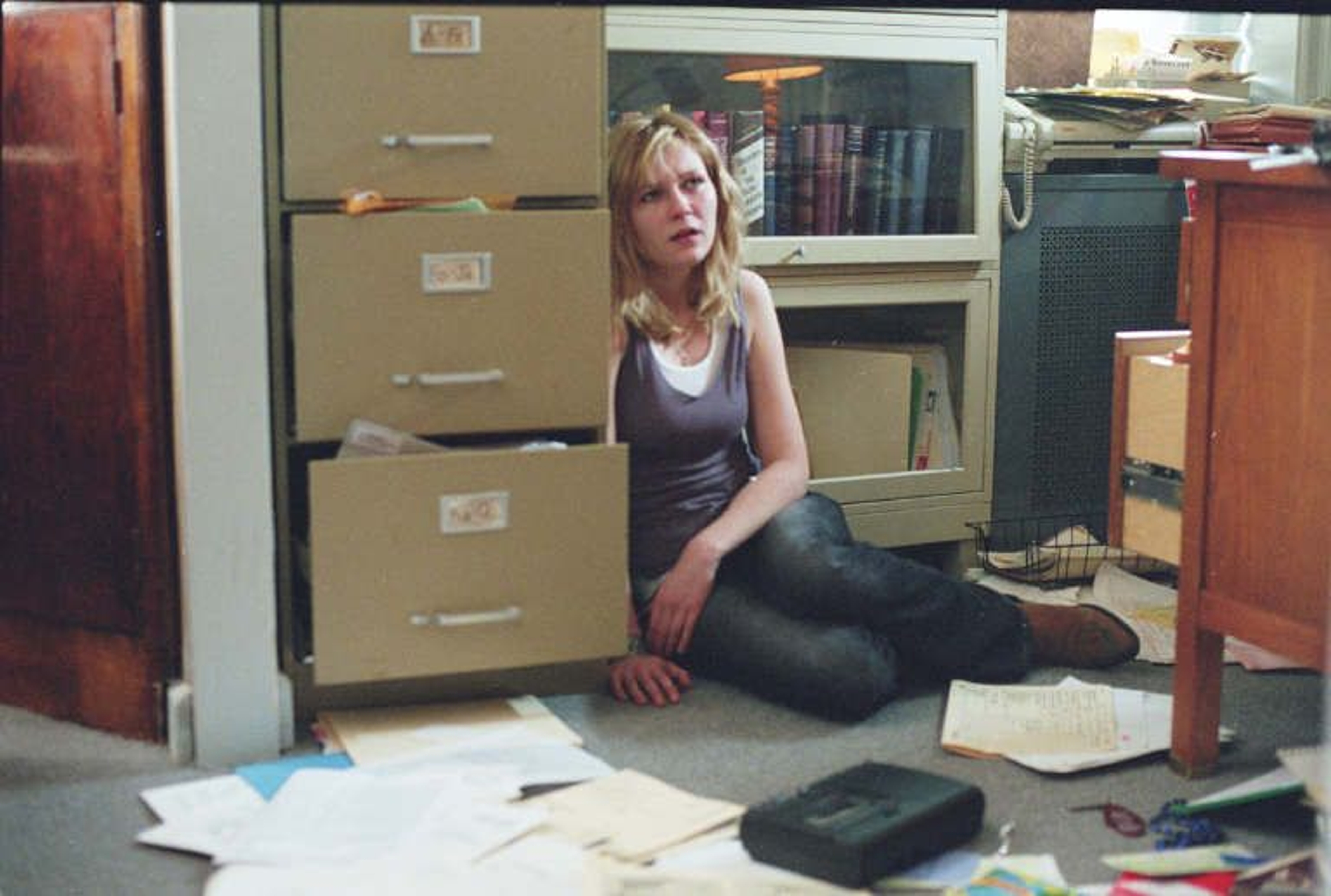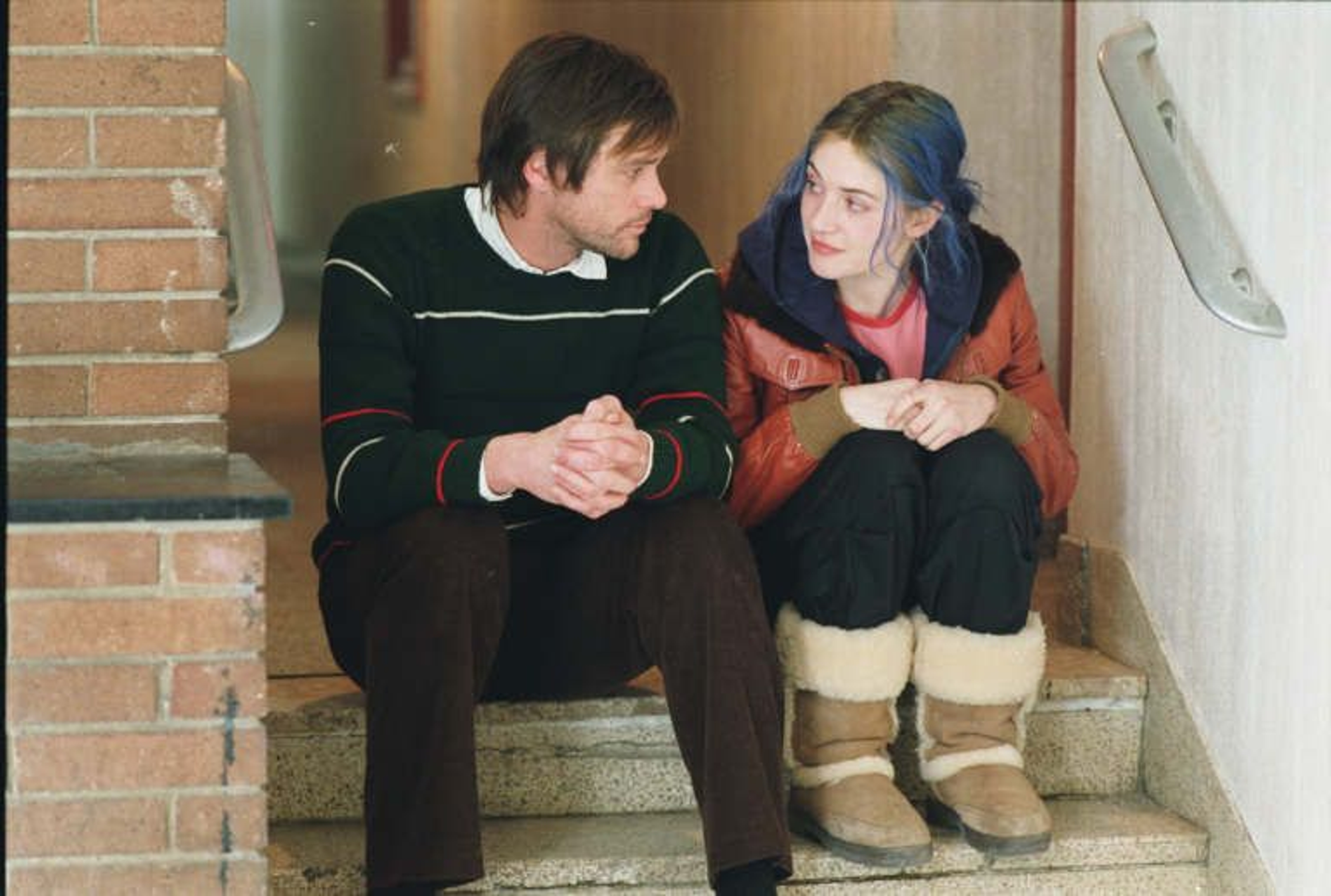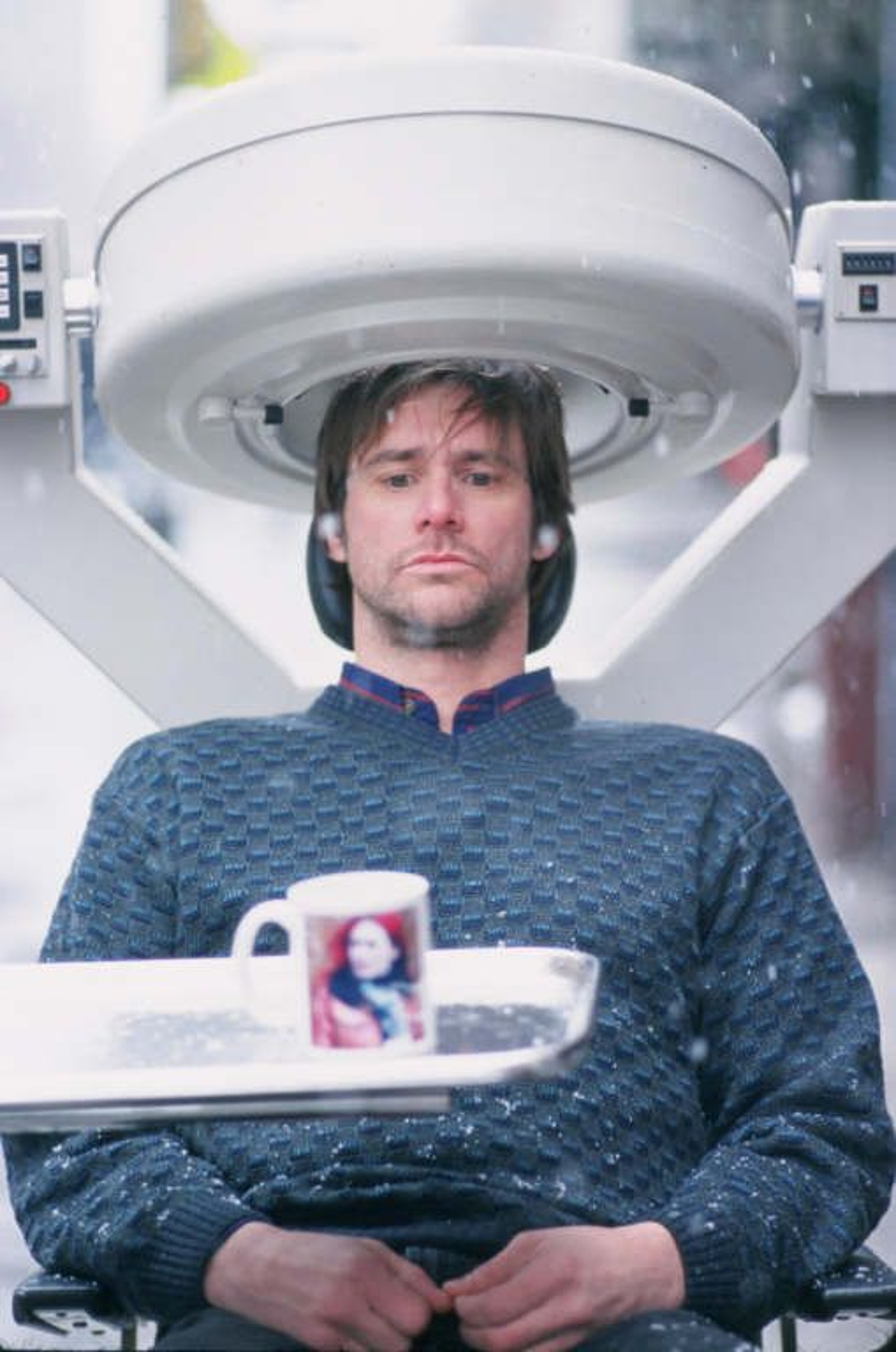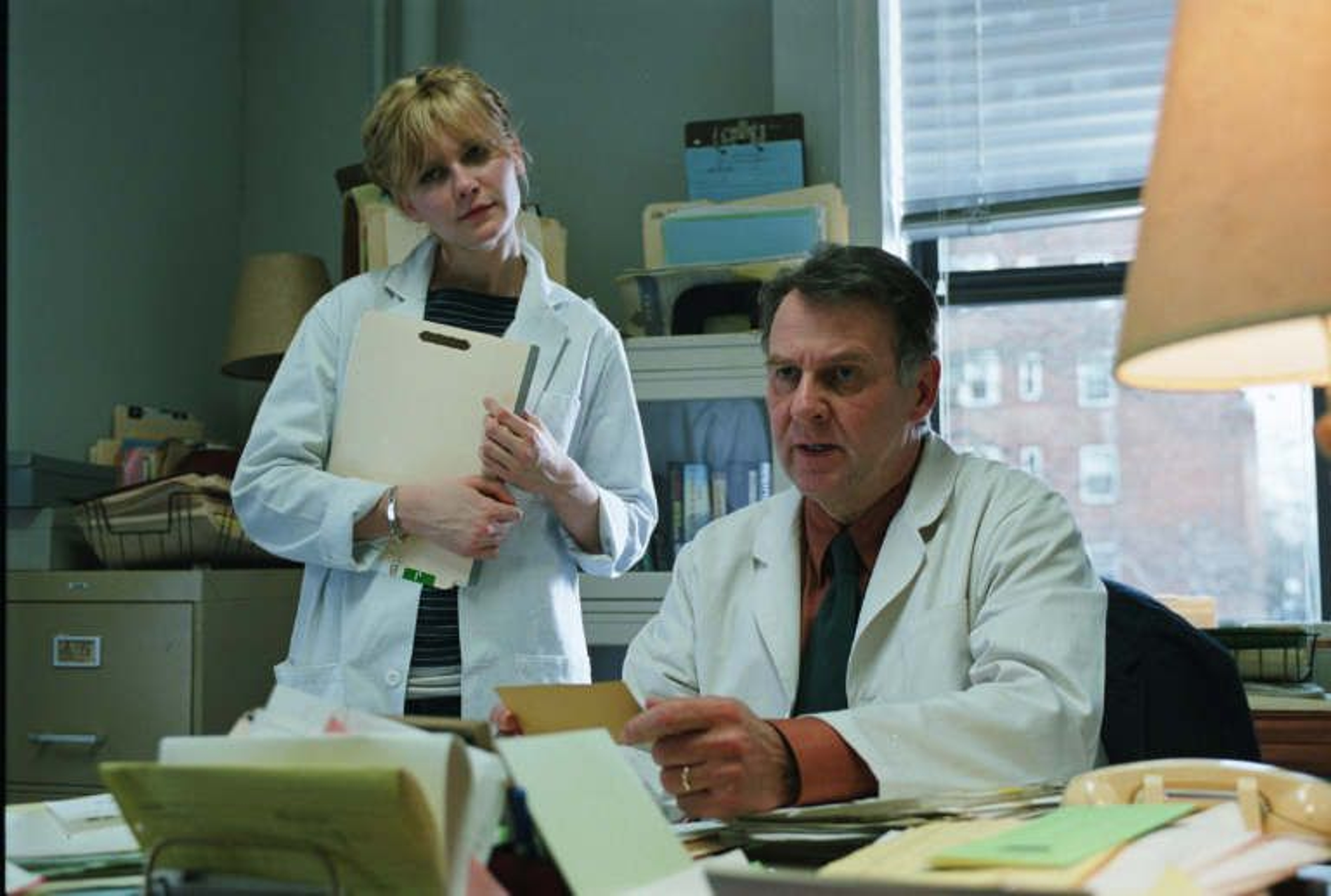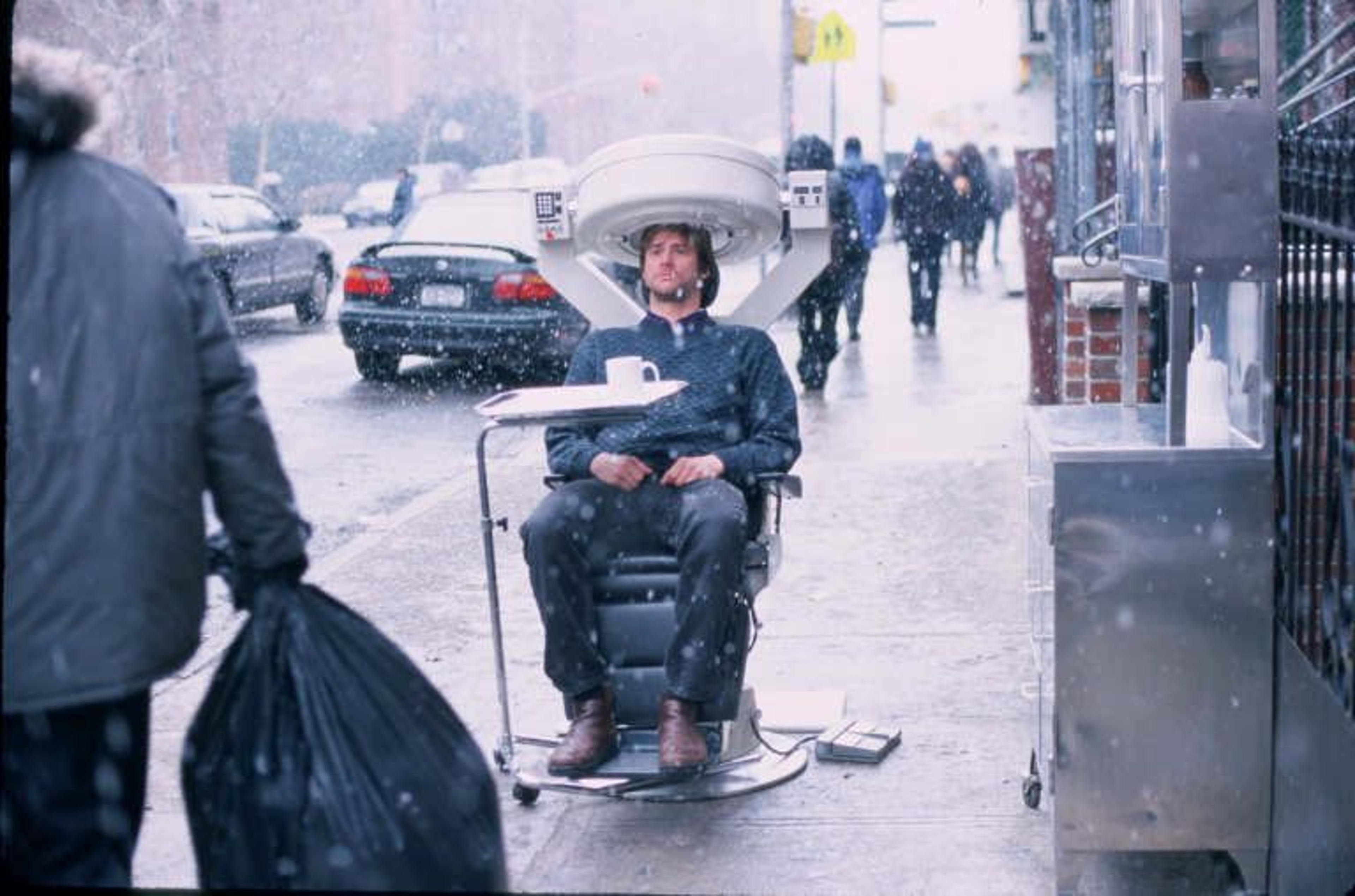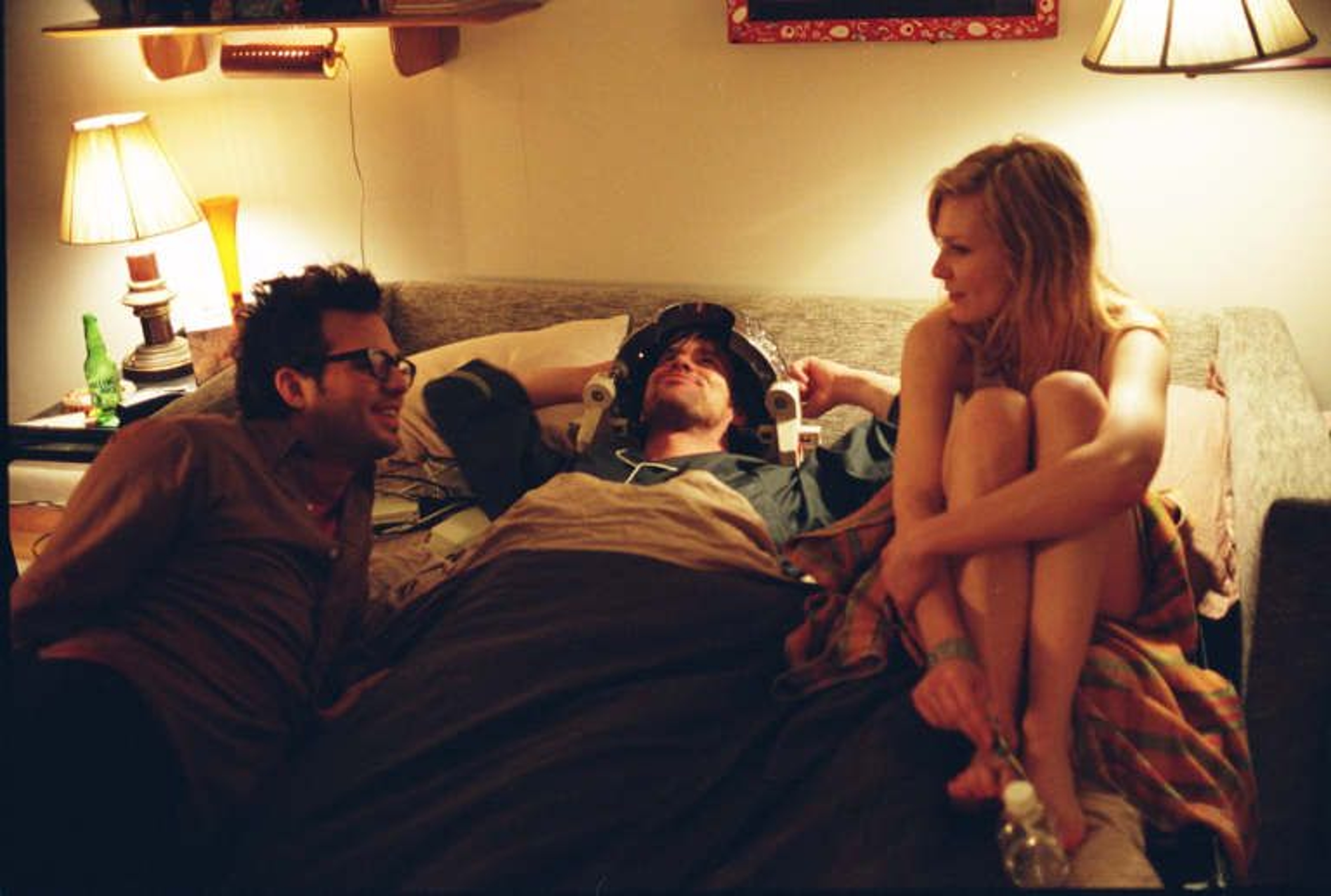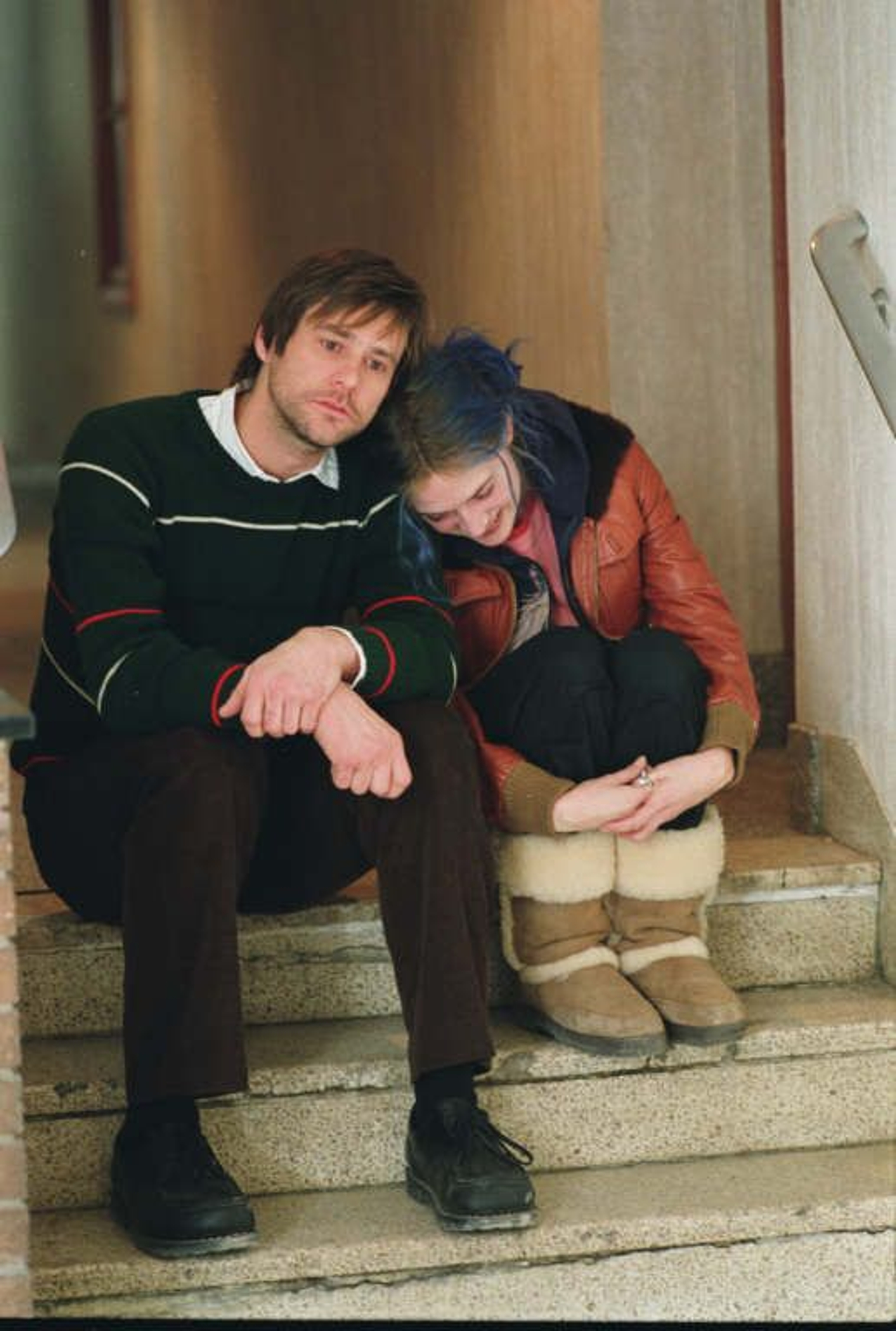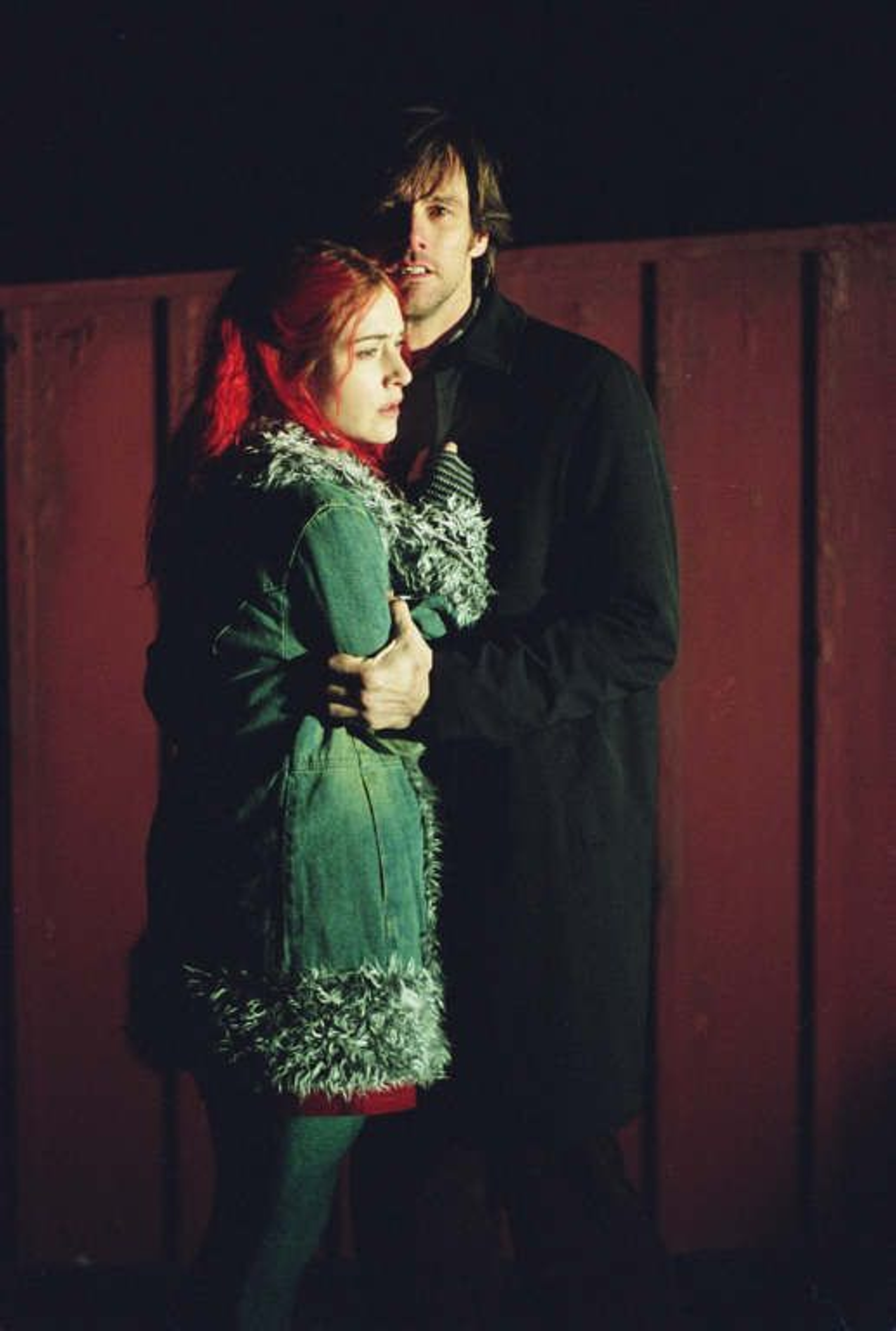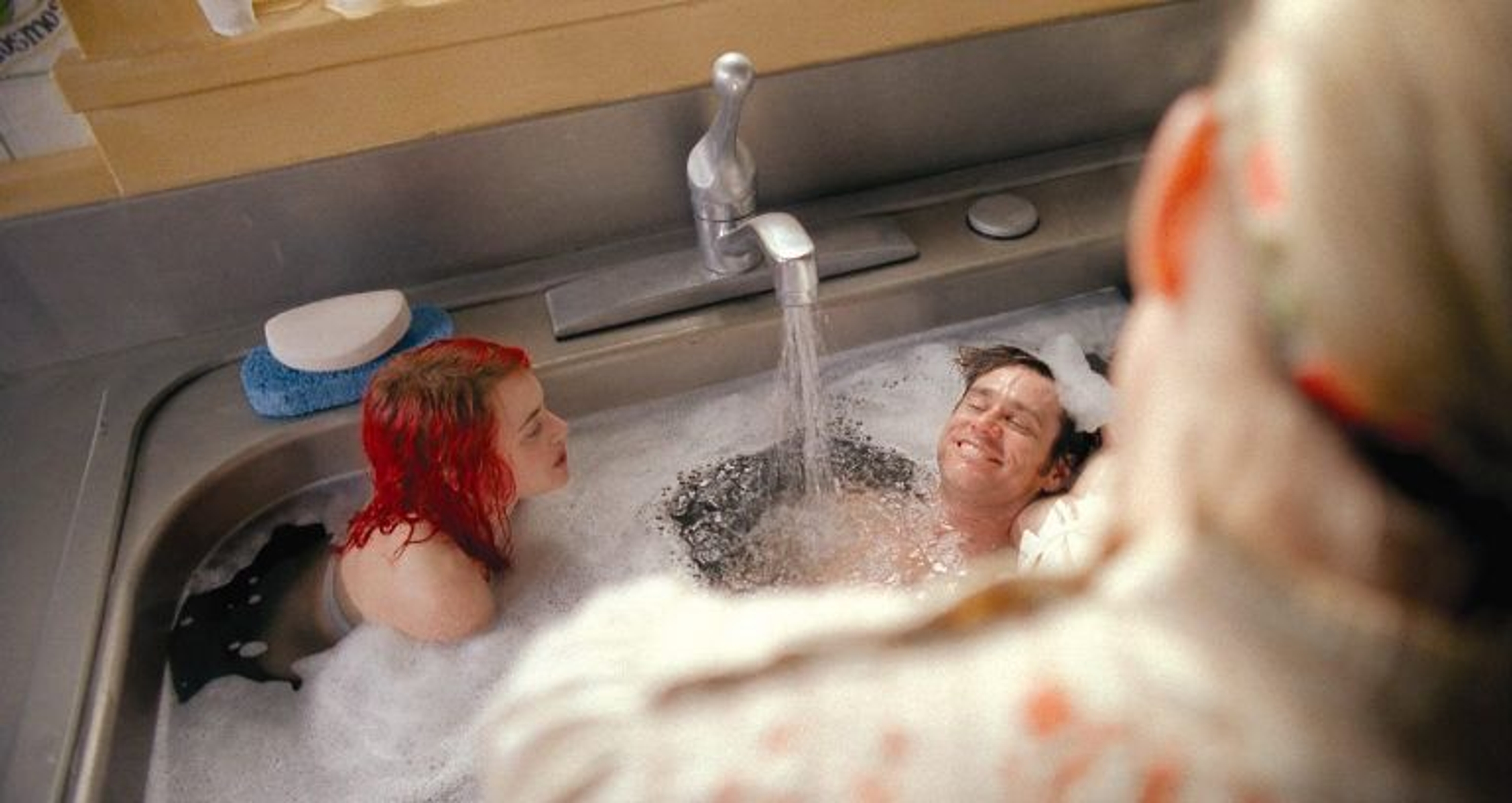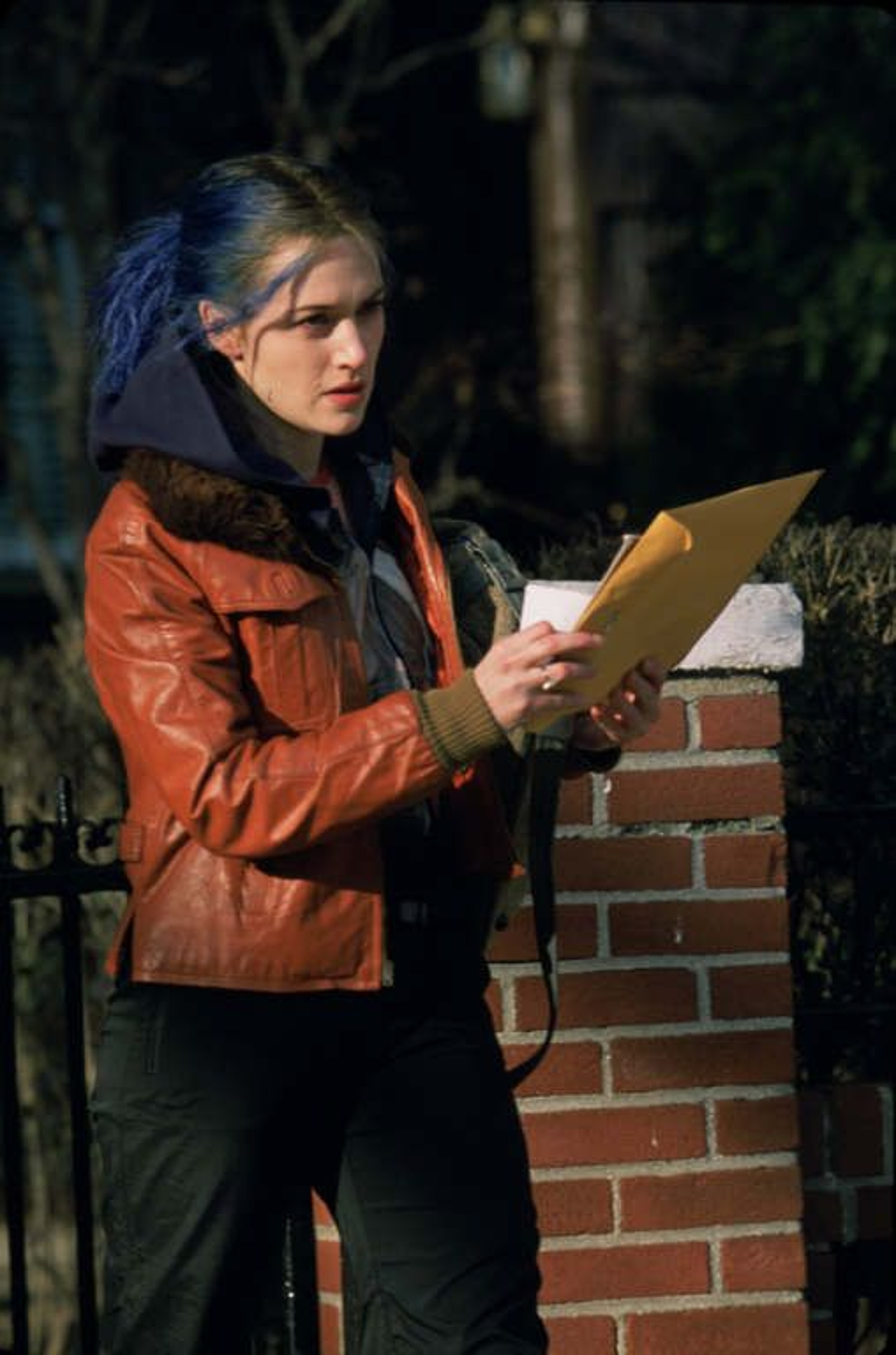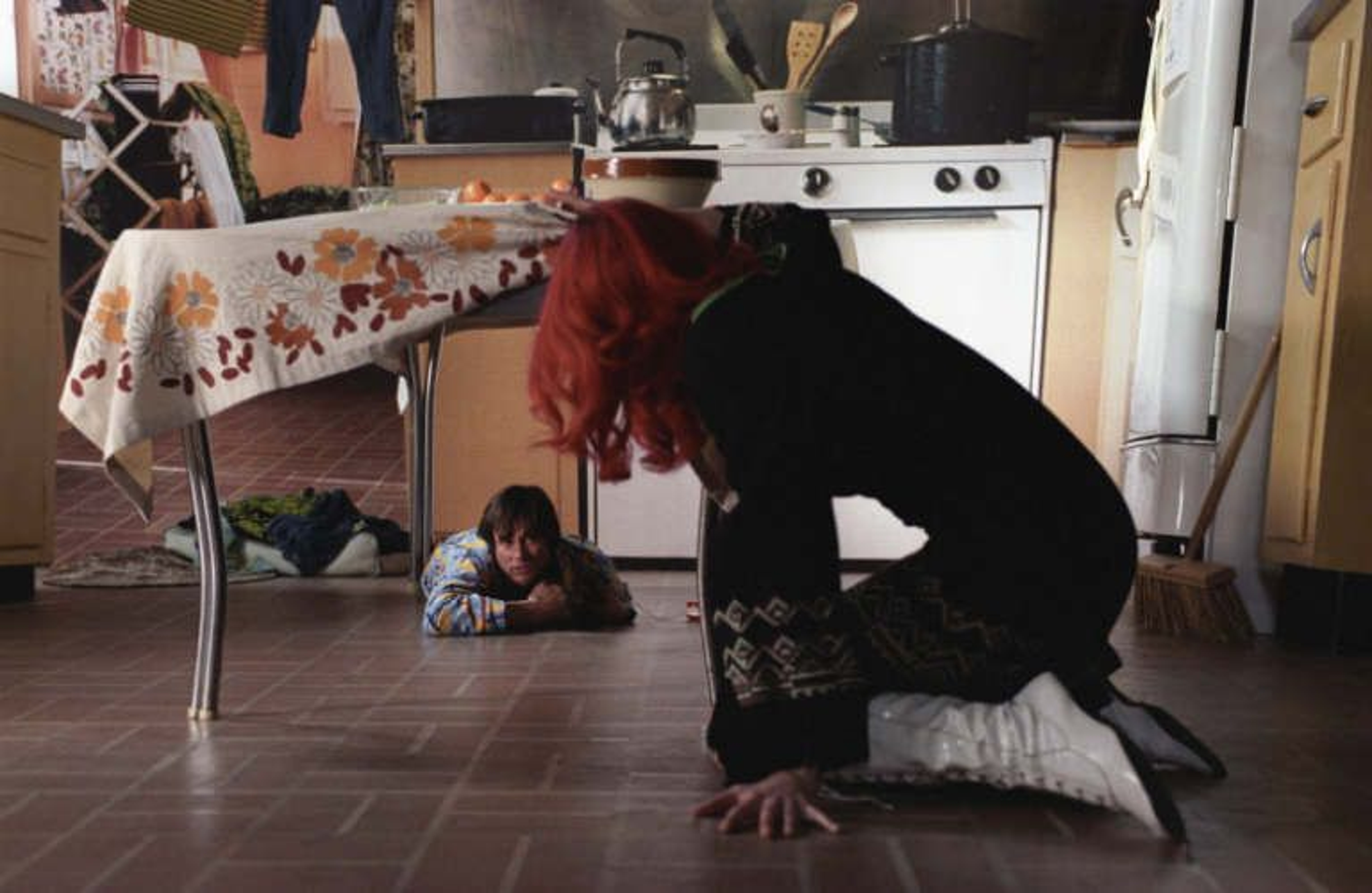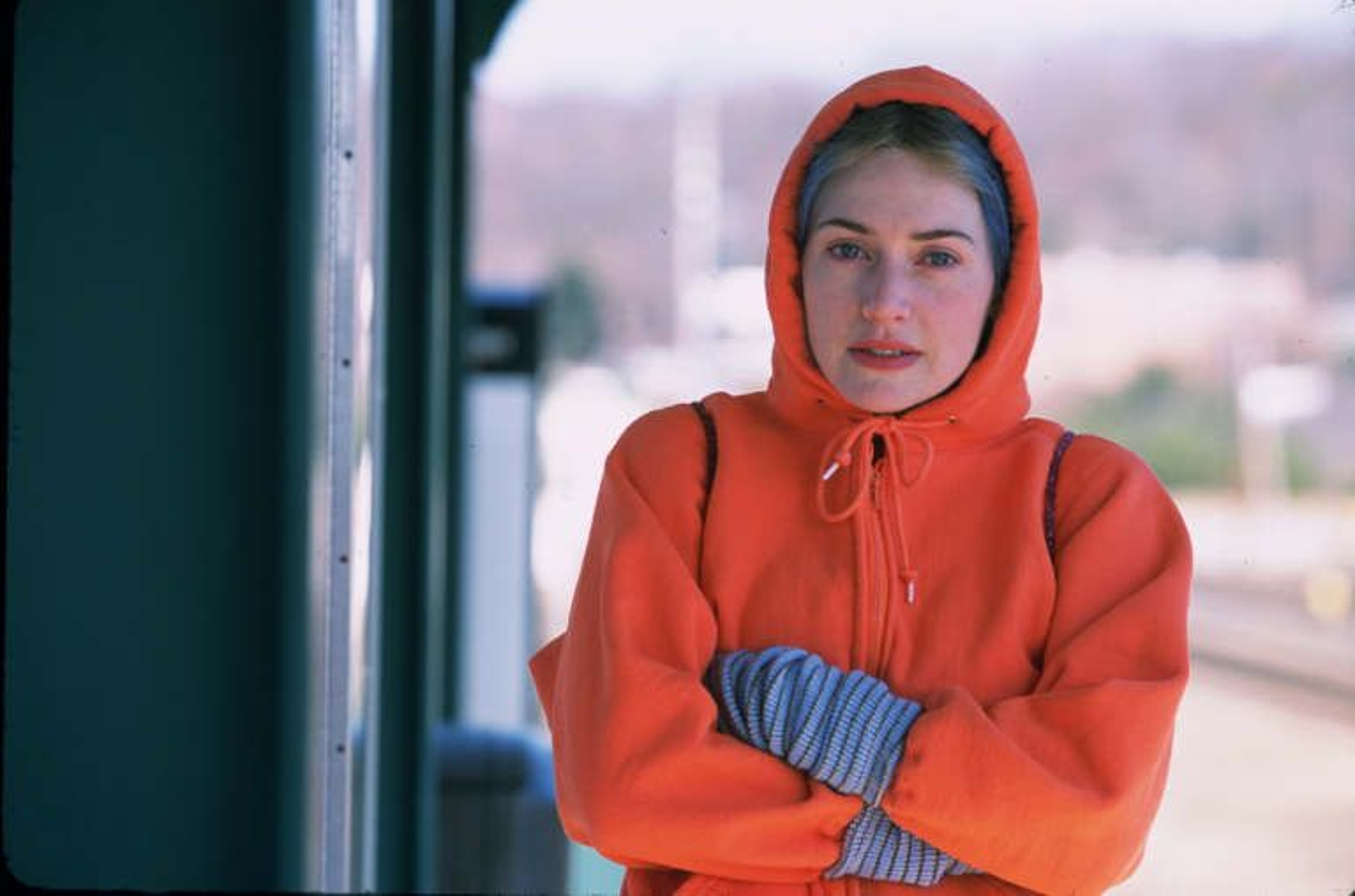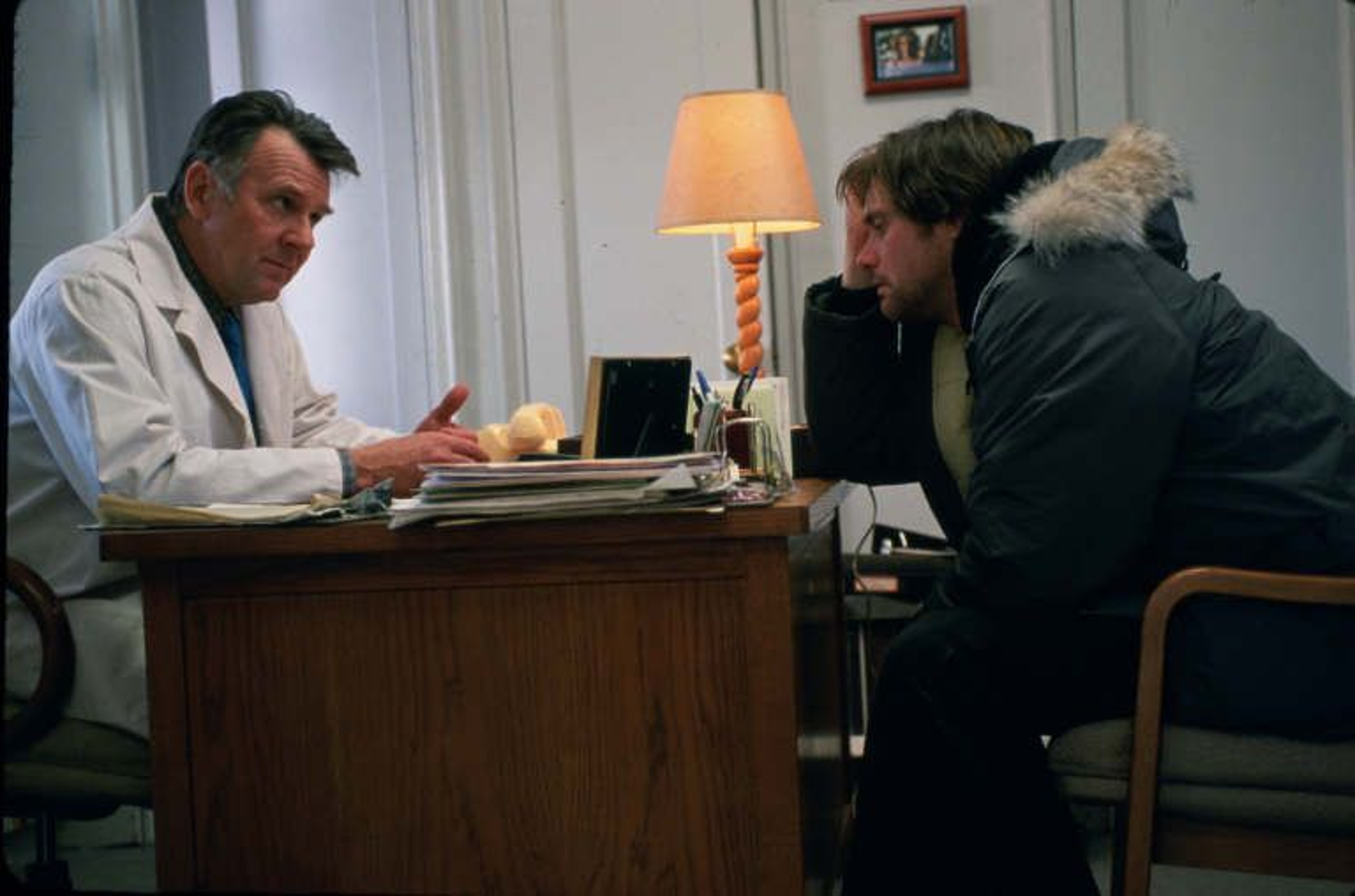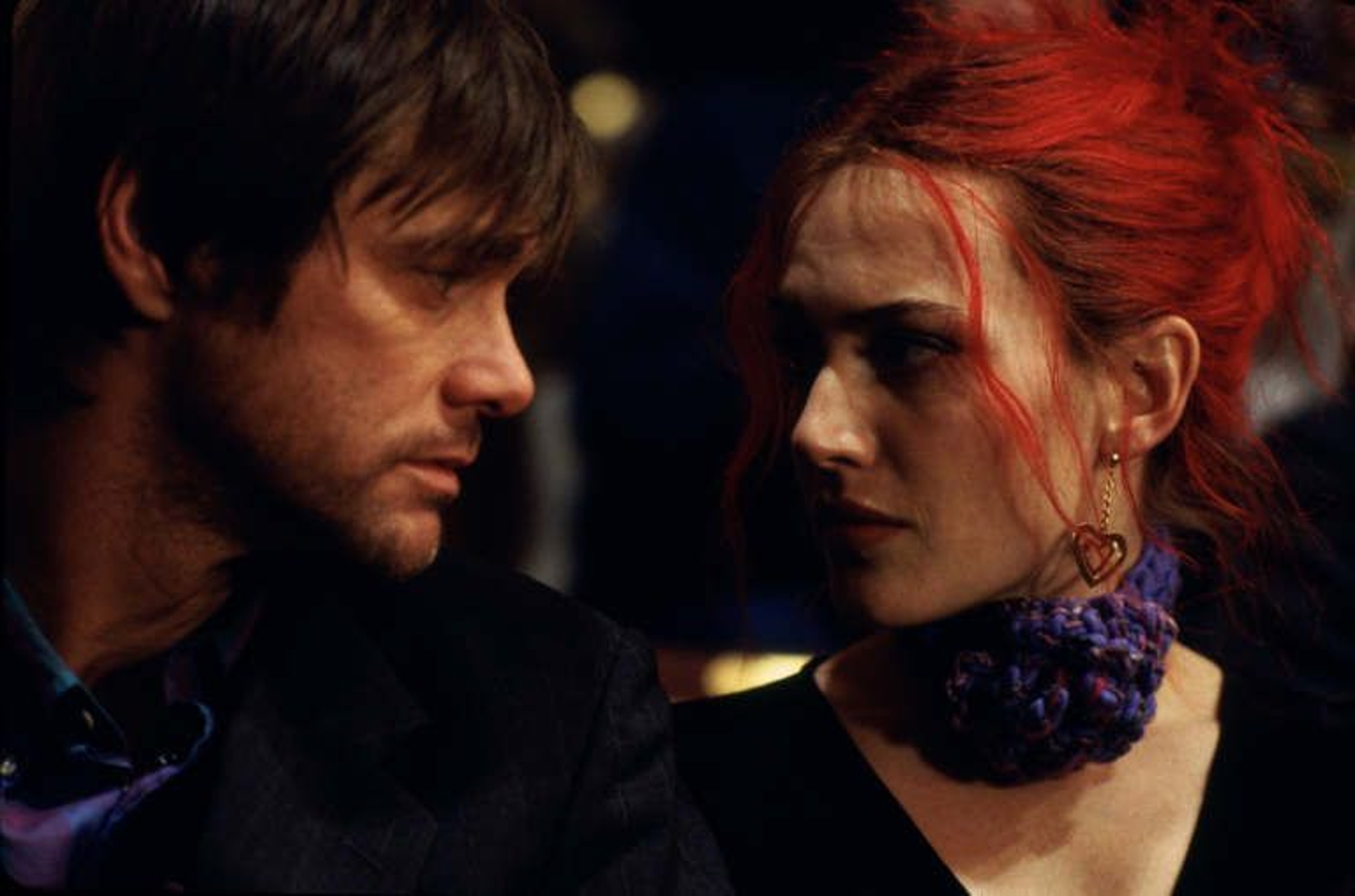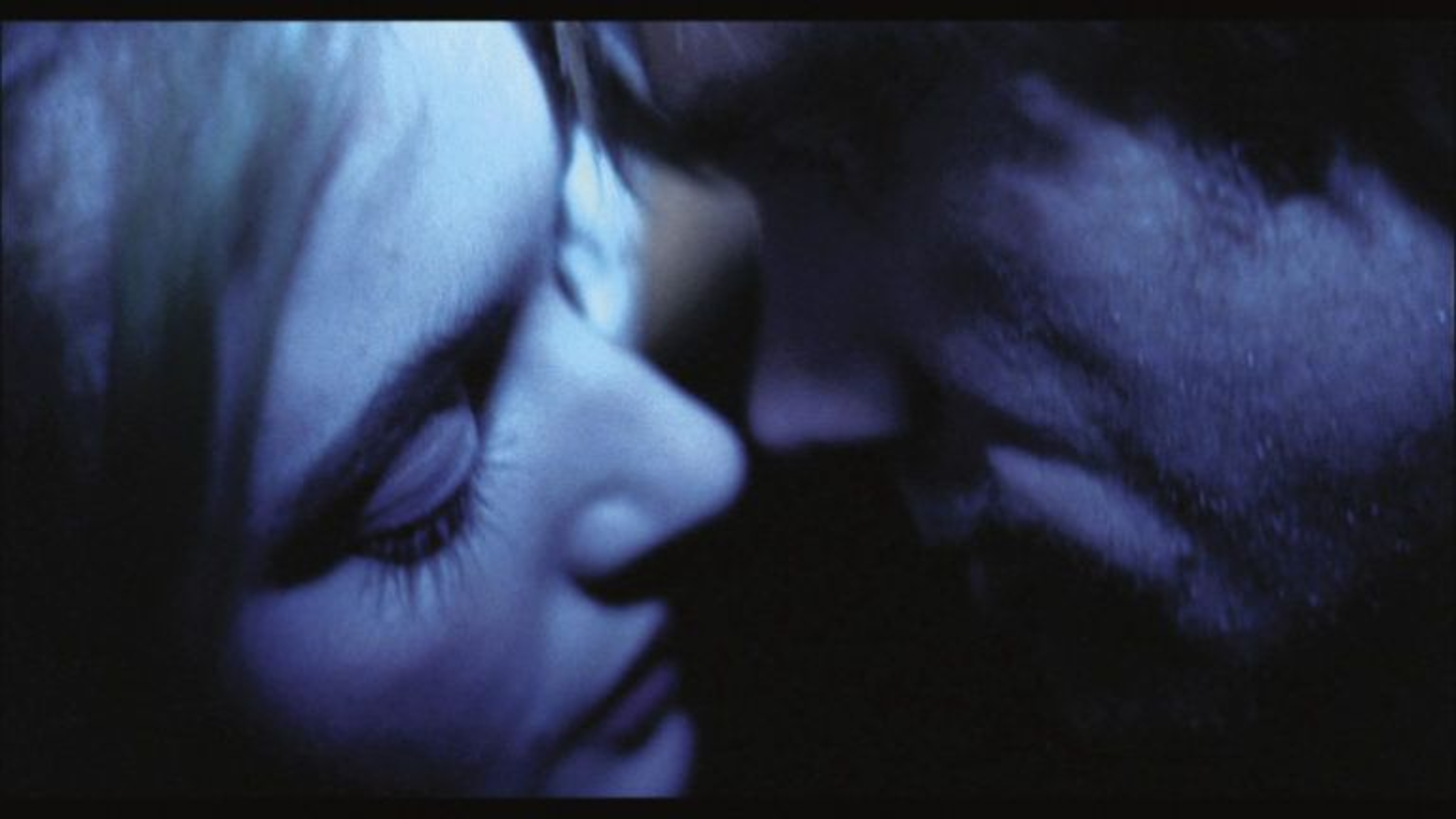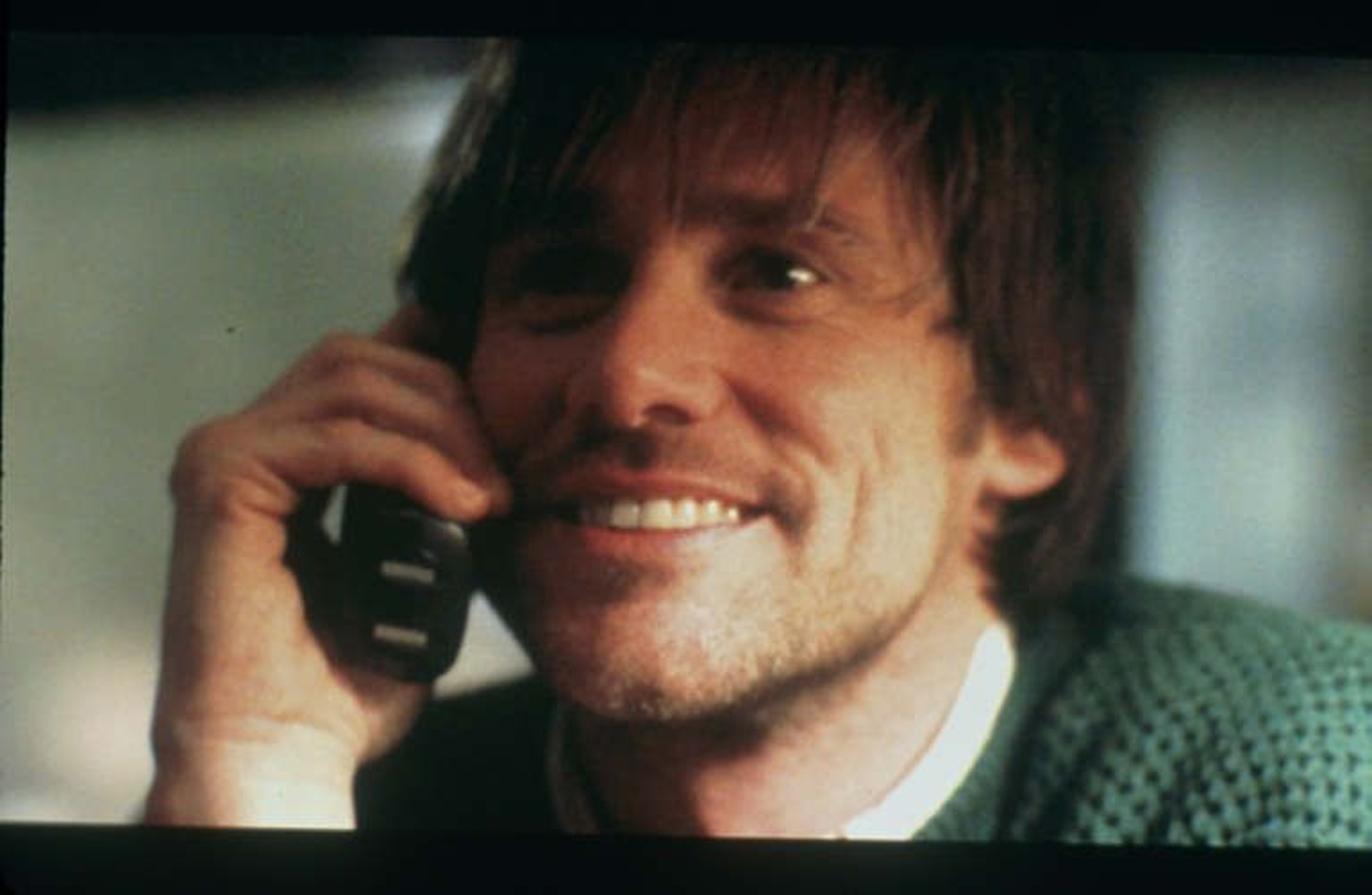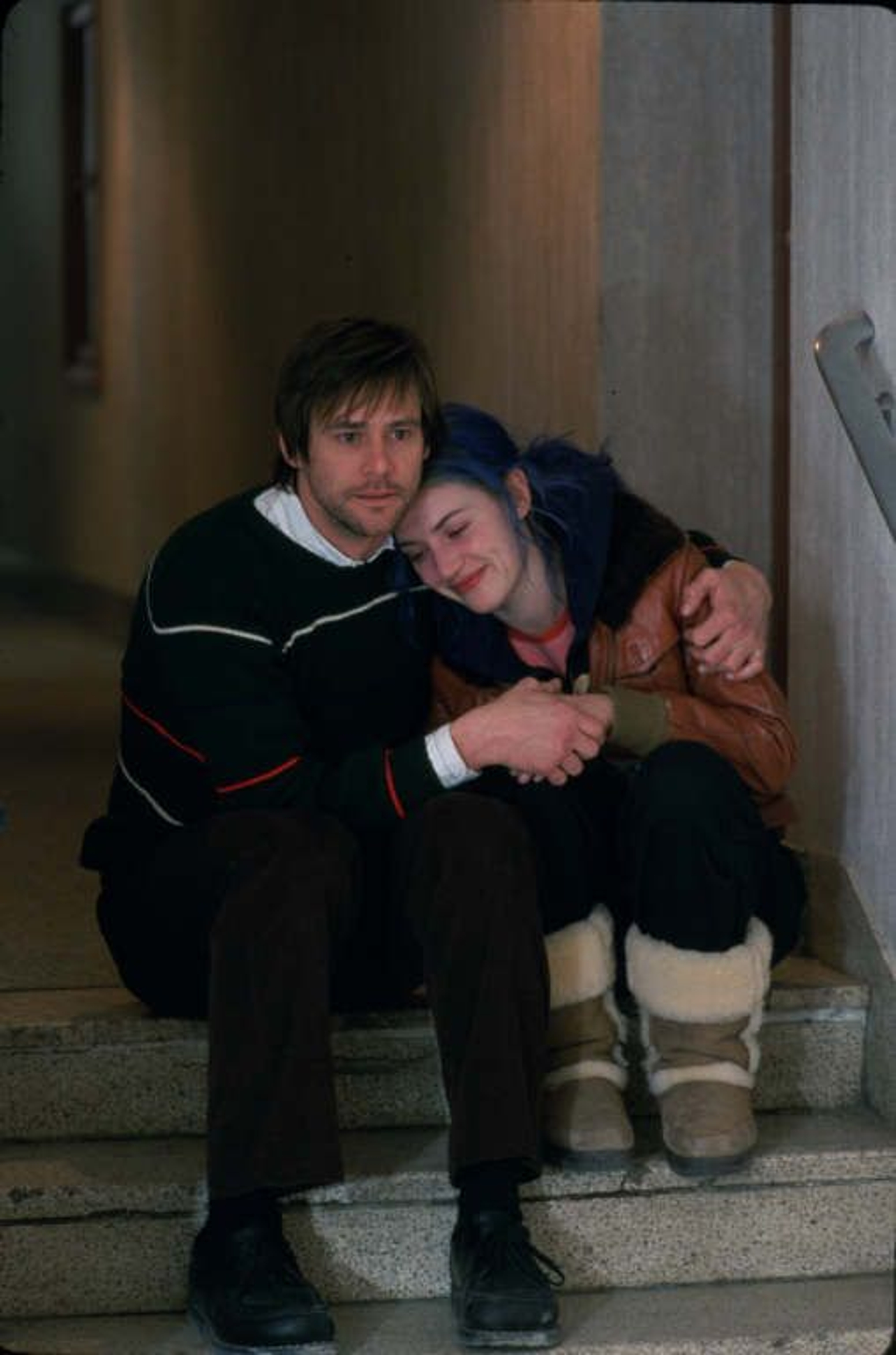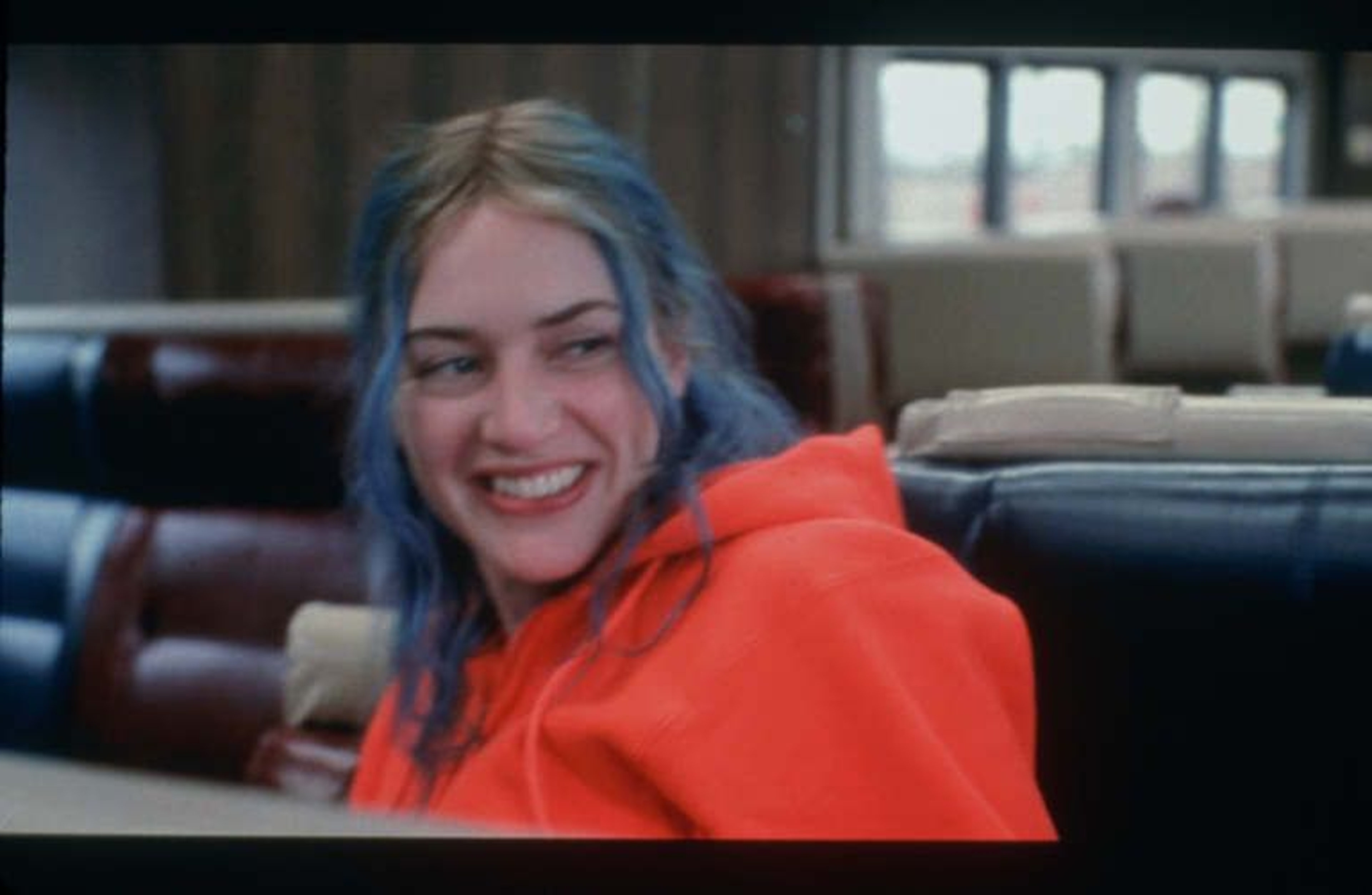When it opened in theaters on March 19, 2004, Michel Gondry’s Eternal Sunshine of the Spotless Mind was a triumph of emotion and imagination. Entertainment Weekly wrote it “may be the first movie I’ve seen that bends your brain and breaks your heart at the same time.” Charlie Kaufman won an Academy Award® for Original Screenplay his utterly original script about Joel Barish (Jim Carrey), a lovelorn soul grappling with the complexity of love and the persistence of memory.
From acclaimed writer Charlie Kaufman and visionary director Michel Gondry comes Eternal Sunshine of the Spotless Mind. Joel (Jim Carrey) is stunned to discover that his girlfriend, Clementine (Kate Winslet), has had their tumultuous relationship erased from her mind.
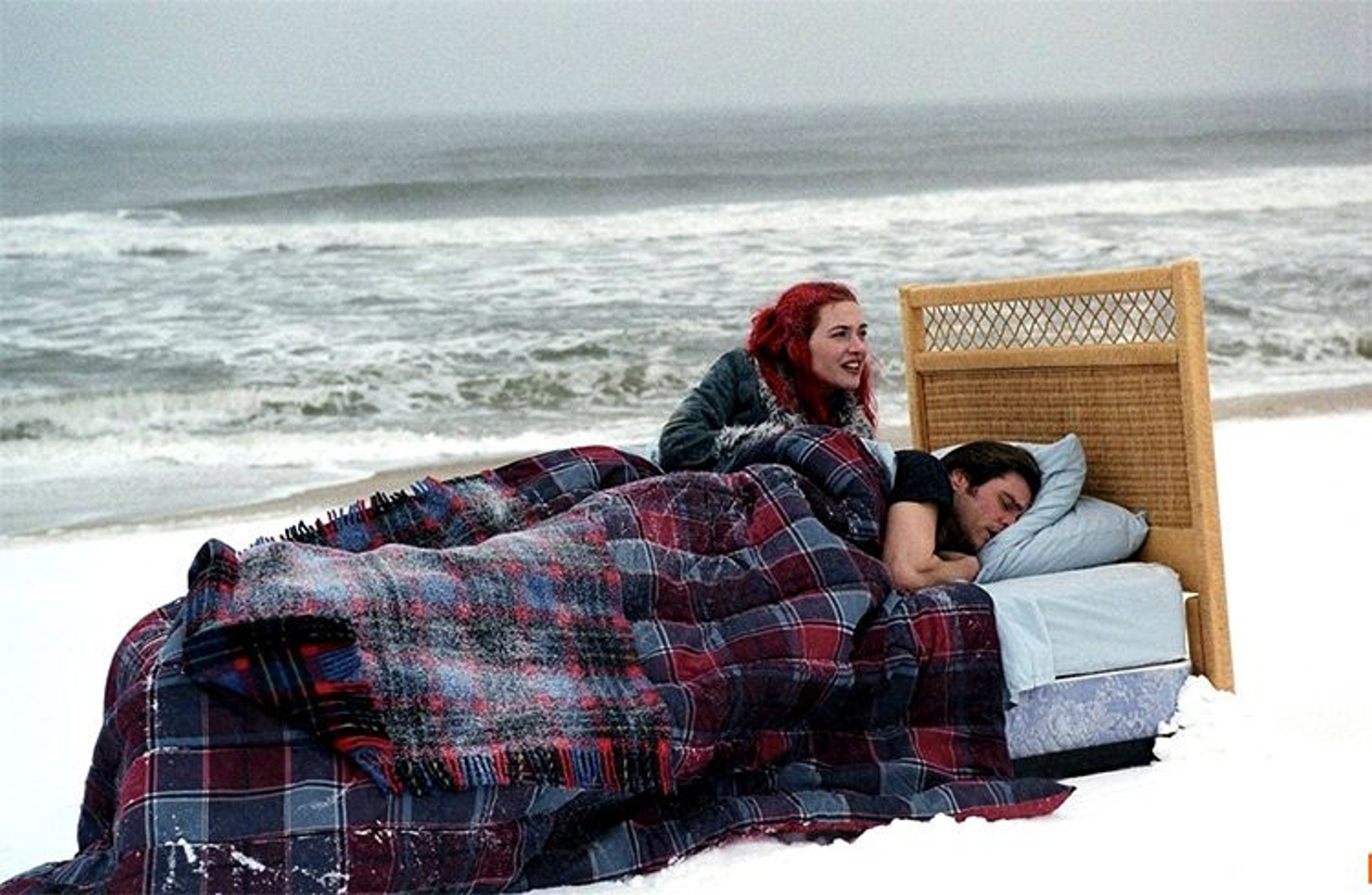
Kate Winslet stars as Clementine and Jim Carrey stars as Joel in Eternal Sunshine of the Spotless Mind (2004).
Jim Carrey stars as Joel in Eternal Sunshine of the Spotless Mind (2004).
Mark Ruffalo as Stan and Kirsten Dunst as Mary in Eternal Sunshine of the Spotless Mind (2004).
Kate Winslet stars as Clementine in Eternal Sunshine of the Spotless Mind (2004).
Kate Winslet stars as Clementine in Eternal Sunshine of the Spotless Mind (2004).
Jim Carrey stars as Joel and Kate Winslet stars as Clementine in Eternal Sunshine of the Spotless Mind (2004).
Jim Carrey stars as Joel and Kate Winslet stars as Clementine in Eternal Sunshine of the Spotless Mind (2004).
Elijah Wood as Patrick in Eternal Sunshine of the Spotless Mind (2004).
Jim Carrey stars as Joel and Kate Winslet stars as Clementine in Eternal Sunshine of the Spotless Mind (2004).
Kirsten Dunst as Mary in Eternal Sunshine of the Spotless Mind (2004).
Jim Carrey stars as Joel and Kate Winslet stars as Clementine in Eternal Sunshine of the Spotless Mind (2004).
Jim Carrey stars as Joel in Eternal Sunshine of the Spotless Mind (2004).
Kirsten Dunst as Mary and Tom Wilkinson as Dr. Mierzwiak in Eternal Sunshine of the Spotless Mind (2004).
Jim Carrey stars as Joel in Eternal Sunshine of the Spotless Mind (2004).
Mark Ruffalo as Stan, Jim Carrey as Joel and Kirsten Dunst as Mary in Eternal Sunshine of the Spotless Mind (2004).
Jim Carrey stars as Joel and Kate Winslet stars as Clementine in Eternal Sunshine of the Spotless Mind (2004).
Kate Winslet stars as Clementine and Jim Carrey stars as Joel in Eternal Sunshine of the Spotless Mind (2004).
Jim Carrey stars as Joel and Kate Winslet stars as Clementine in Eternal Sunshine of the Spotless Mind (2004).
Kate Winslet stars as Clementine in Eternal Sunshine of the Spotless Mind (2004).
Jim Carrey stars as Joel and Kate Winslet stars as Clementine in Eternal Sunshine of the Spotless Mind (2004).
Kate Winslet stars as Clementine in Eternal Sunshine of the Spotless Mind (2004).
Tom Wilkinson as Dr. Mierzwiak and Jim Carrey stars as Joel in Eternal Sunshine of the Spotless Mind (2004).
Jim Carrey stars as Joel and Kate Winslet stars as Clementine in Eternal Sunshine of the Spotless Mind (2004).
Kate Winslet stars as Clementine and Jim Carrey stars as Joel in Eternal Sunshine of the Spotless Mind (2004).
Jim Carrey stars as Joel in Eternal Sunshine of the Spotless Mind (2004).
Jim Carrey stars as Joel and Kate Winslet stars as Clementine in Eternal Sunshine of the Spotless Mind (2004).
Kirsten Dunst as Mary in Eternal Sunshine of the Spotless Mind (2004).
Kate Winslet stars as Clementine in Eternal Sunshine of the Spotless Mind (2004).
Jim Carrey stars as Joel in Eternal Sunshine of the Spotless Mind (2004).
In the 20 years since its release, Eternal Sunshine of the Spotless Mind has become richer and more rewarding. Its fantastic premise now seems more science than fiction. Its ideas have engaged philosophers and cineastes alike. And its romance has made it a Valentine’s Day favorite. Each year, more people are drawn into its wonderful web of science fiction, real romance, and breathtaking storytelling. Recently Everything Everywhere All at Once co-director Daniel Scheinert named it “my undisputed champion” on the BFI greatest movie list, and Ariana Grande paid homage to the film by naming her new album Eternal Sunshine because, as she told Billboard, “It’s always been a favorite of mine.” For its 20th anniversary, we explore what keeps the film forever fresh.

A Memorable Collection
Our limited-edition Eternal Sunshine of the Spotless Mind collection has arrived. 🍊
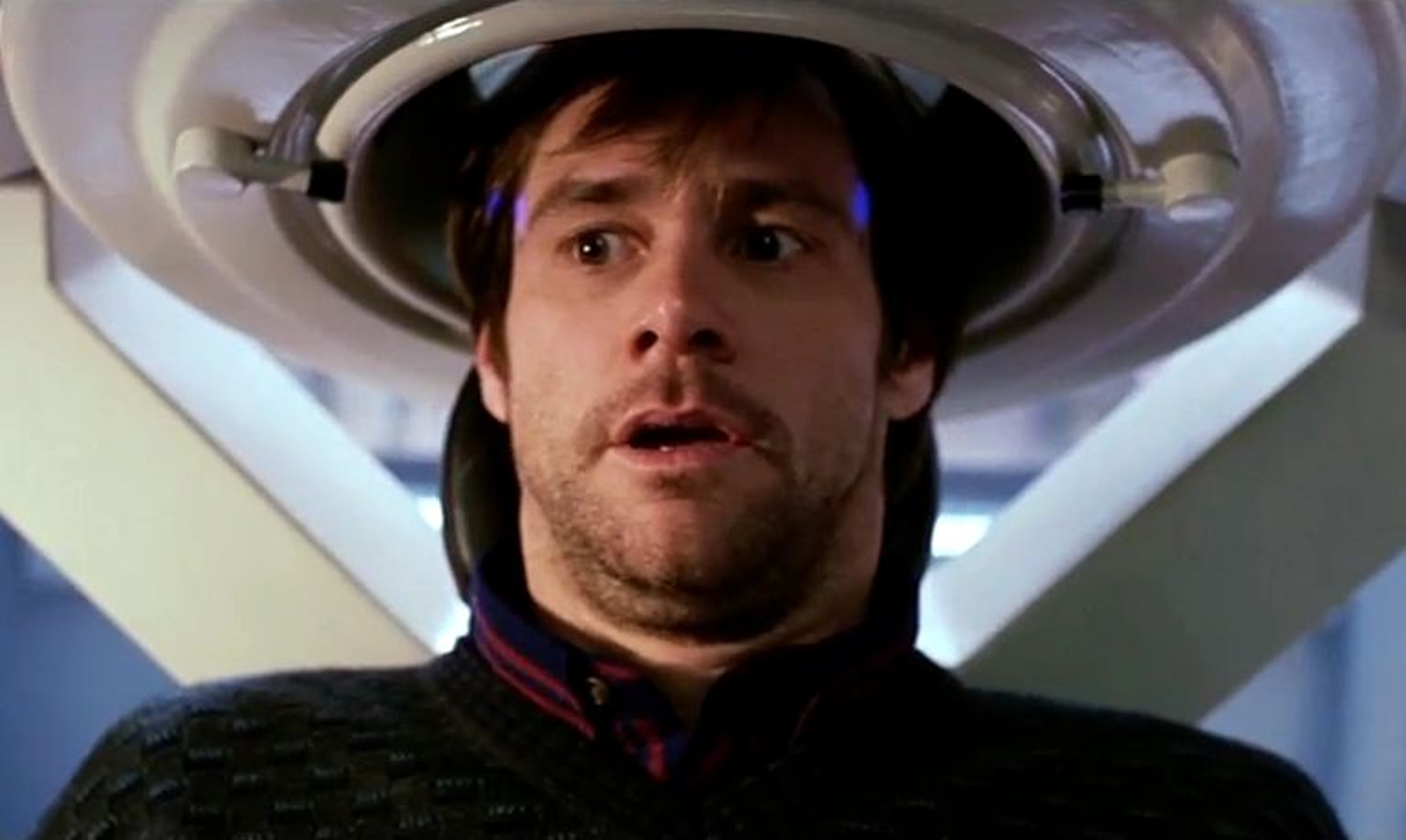
Jim Carrey in Eternal Sunshine of the Spotless Mind
Sci-fi for real people
Part sci-fi brain teaser, part hip rom-com, Eternal Sunshine of the Spotless Mind creates a sort of Mobius strip continually linking our desire to understand the real world to our need to feel emotions. Smarting from the knowledge that his ex-girlfriend, Clementine (Kate Winslet), has erased him from her memories with the help of Dr. Howard Mierzwiak (Tom Wilkinson), Barish attempts to do the same to her. When he has a change of heart, however, he finds there is no way to reverse the process, other than diving deeper into his subconscious to rescue his memories of Clementine. “Like the greatest science fiction writers, Kaufman is using a bizarre futuristic scenario to tell us something about the here and now: about the loss of our most vivid loves to the impermanence of memory,” writes Slate.
Originally written as a philosophical allegory, the film’s technological now feels uncomfortably real. From Live Science’s “Spotless Mind? Erasing Memories Not Just Science” to Mic’s “MIT Scientists Are Halfway to Making Eternal Sunshine of the Spotless Mind a Reality,” writers chronicle how real Kaufman’s brave new world is becoming. But Eternal Sunshine continually appears at the top of lists of best sci-fi films less for its science and more for the way it makes us look at ourselves. “Science fiction has long explored what it means to be human, but Eternal Sunshine zeros in on that idea, asking what it means to be a human in love, in pain, and in confusion,” Screencrush writes.

Kate Winslet and Jim Carrey in Eternal Sunshine of the Spotless Mind
A philosophical love story
The film starts on February 14, as Joel takes off work to visit Montauk, cynically noting, “Valentine's Day is a holiday invented by greeting card companies to make people feel like crap.” Despite such sentiments, the film has come to be adored as a smart person’s rom-com. Consistently picked by sites from Bustle to Techhive as the perfect film to watch on Valentine’s Day, Eternal Sunshine was recently named by the Huffington Post as “truly the love story of our time.”
More than just spouting fluffy sentiments about love, The New York Times writes, “Eternal Sunshine of the Spotless Mind treats it as a subject for extended philosophical inquiry.” A recent article on PhilArchive highlights that the film “raises poignant questions for the ethicist, epistemologist, neuroscientist, metaphysician, and cognitive scientist.” Yet, despite its ability to inspire the most fascinating questions about the nature of love, identity, and memory, the story is deeply rooted in real life and emotion.
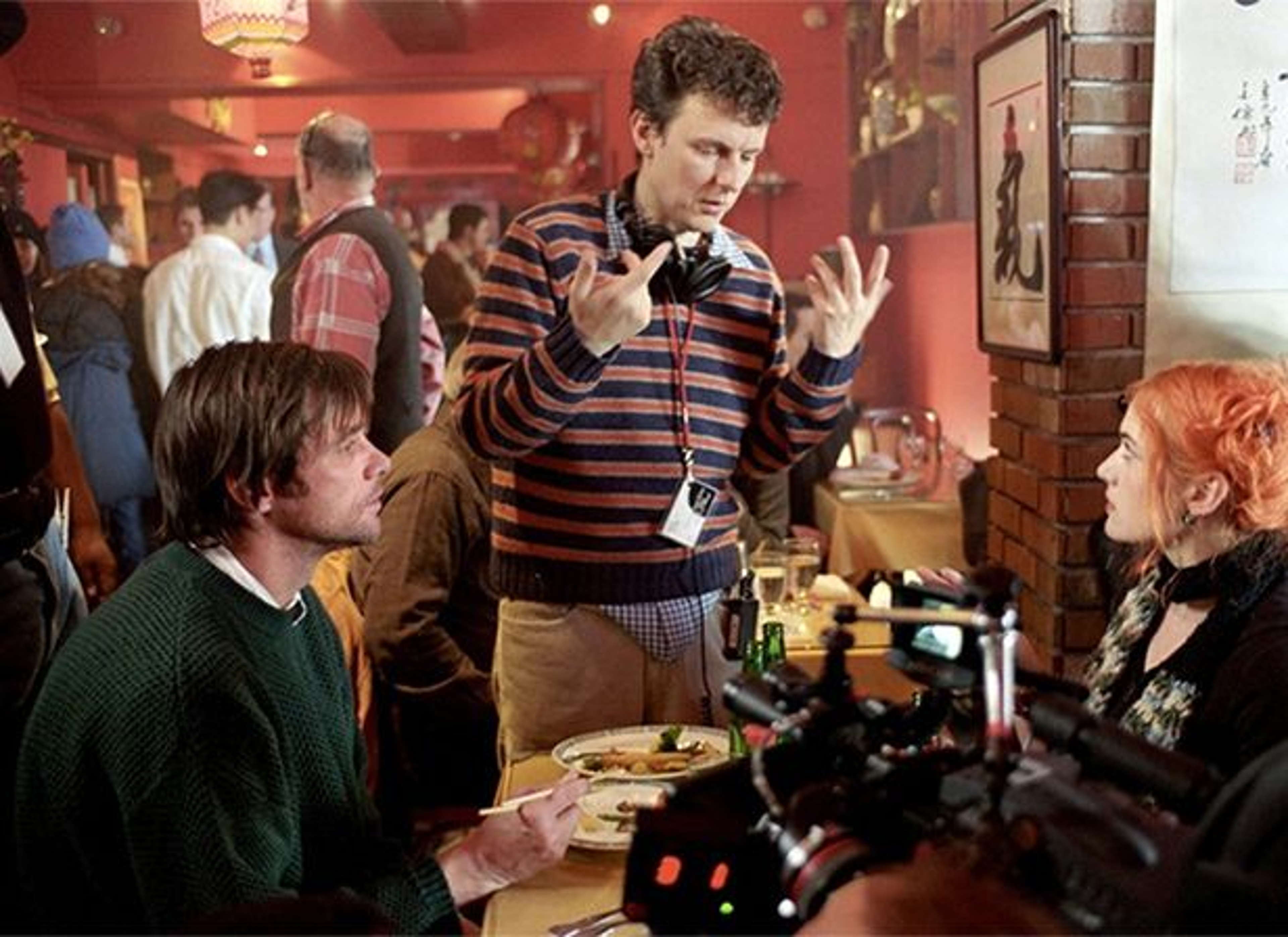
Michel Gondry with Jim Carrey and Kate Winslet on the set of Eternal Sunshine of the Spotless Mind
Revolutionary performances
One of the biggest surprises in a film with endless astonishment comes from the performances of the two leads. Both are remarkable actors, but their characters show off sides of them previously unseen. “These two actors engage in something of a role reversal,” notes The Austin Chronicle. “Carrey taking the low-key, reactive role and Winslet playing the wild and kinetic character.”
For Carrey, the brooding, romantic Joel Barish is a far cry from the wild and crazy characters he played in comedies like Ace Ventura and Dumb and Dumber. In rehearsals, Gondry presented him a slightly altered version of the film, issuing instructions on set that often contradicted what he was telling the other cast members. Gondry told the Daily Beast, “Sometimes, I had to talk to Kate Winslet in a different room to tell her, ‘Go as big as you want! This is a comedy!’ And to Jim, I’d say, ‘This is a drama, not a comedy.’”
For people who knew Kate Winslet only as the demur beauty of such period pieces as Sense & Sensibility and Titanic, her Clementine was a shock. Spontaneous and funny, with a hairstyle that changed from blue to orange to red, Winslet was a revelation. Winslet told LiveAbout, “When I was sent the script and was asked to do it, I just thought, “Well, there’s no way I’m not going to do this” because I knew that it would be a totally new experience.” Her gamble paid off when she was nominated for an Academy Award® for Best Actress for her exuberant performance.
Eternal Sunshine of the Spotless Mind imagines Jim Carrey as a child
Hand-made movie magic
For special effects, Gondry bucked high-tech CGI technology and returned to simple, old-style cinematography. “Charlie had a very poetic way of putting this decaying memory into words, and I had to find something that would affect me the same way,” Gondry told the A. V. Club. “We decided early on that each time you see an effect in this movie, it has to give you a visceral response. You have to feel it.”
In American Cinematography, director of photography Ellen Kuras describes how they went “back to early cinema, where magicians were using live-action practical effects in order to change time and space…In one of the scenes, he wanted me to shake the camera so we could see it was a handheld effect in camera, as opposed to a locked-off superimposition effect or double exposure.”
Gondry’s on-set illusions imbue the film with a warm, homemade feel throughout. For many of the childhood dream sequences, Gondry teamed with production designer Dan Leigh—who’d previously assisted actual stage magicians—to construct sets showcasing forced perspective and exaggerated scale. With a slanted floor and skewed rectangular surface, an adult Carrey could be made to appear like a little child hiding beneath a table. Sometimes the most incredible effects were created by the simplest of actions. Film Experience notes how “for the memorable shot of Clementine sliding backward into darkness across the floor of Grand Central Station, crew members simply pulled Kate Winslet with some wires.”
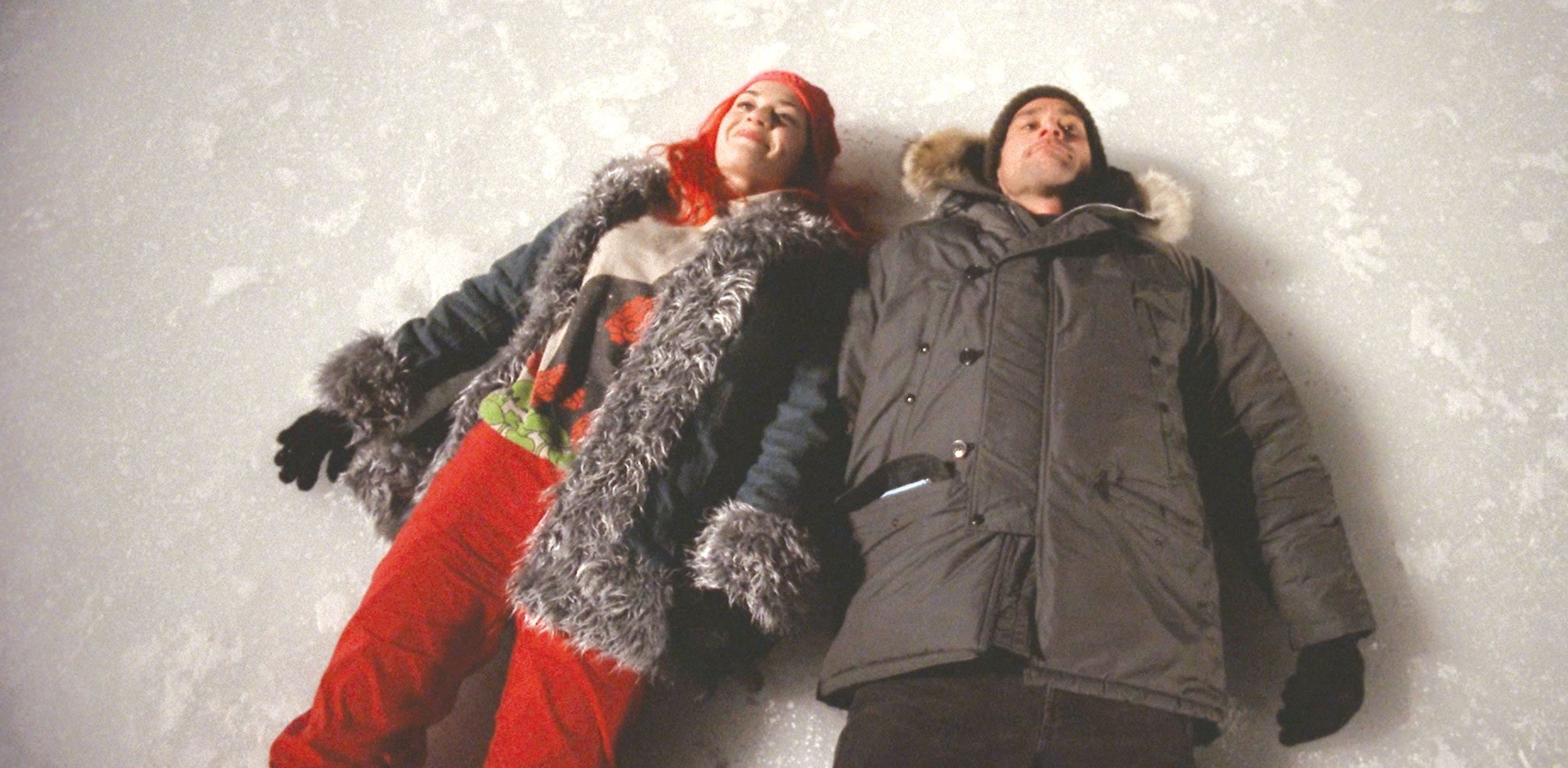
Get More As a Focus Insider
Celebrate 20 years of this memorable love story and be the first to find out about our films including complimentary screenings, giveaways, and more by being a Focus Insider.
